|
|
Post by chasensfo on Jan 20, 2023 14:36:54 GMT -5
//EVA Air 1998 v2 (20JAN23; re-numbered aircraft for better AI parking, changed cruise speeds to AIG standard, added individual repaint links for Ranmori's paints I am now hosting) EVA Air (1991 - Present) IATA: BR ICAO: EVA CALLSIGN: EVA EVA Air is the 2nd largest airline in Taiwan, based in Tapei (TPE), and is one of the largest international airlines in Asia. EVA Air was founded in 1988 by the Evergreen Group, a Taiwanese shipping giant, as the first privately-owned airline in Taiwan to compete with the state-backed China Airlines on both intra-Asia and long-haul flights. Flights began in 1991 with the initial fleet consisting of 767-200 and -300s, with 747-400s, MD-11s, and a few MD-90s joining the fleet soon after. Initially, the carrier focused on intra-Asia flying on popular routes across Northeast Asia. EVA Air found early success, and quickly expanded on routes across Asia and in several long-haul markets such as Sydney (SYD), Auckland (AKL), Los Angeles (LAX), and San Francisco (SFO) before venturing into Europe. In late 1996 when the Macau Airport (MFM) opened near Hong Kong (HKG), EVA Air quickly added service to the airport to supplement its 747 and MD-11 flights to HKG, which was the most-traveled market from Taiwan. MFM and HKG were especially popular at the time for passengers in transit between Taiwan and China as at the time, China did not allow direct service to Taiwan and Taiwanese airlines were not allowed into mainland Chinese airspace. Around this same time, EVA Air formed a joint venture with All Nippon Airways (ANA) domestic subsidiary Air Japan (ANK), which used it's lone 767-300 for ANA's Taiwan services during a time in which few airlines were allowed access to Chinese airports if also serving Taiwan, leading to the creation of various subsidiaries like KLM Asia, British Asia Airways, Air France Asie, Swissair Asia, and Australia Airlines (QANTAS) to allow carriers to serve both markets. "ANK" titles were added to the MD-11s and interline connections were offered in both Japan and Taiwan for passengers between the 2 carriers. To expand into the fiercely competitive domestic Taiwanese market, which at the time saw several carriers competing in Taiwan's few short domestic sectors with high frequencies, EVA Air acquired Makung Airlines in 1996. Domestic Taiwanese flights almost exclusively used Taipei's then-domestic Songshan Airport (SHA), and accordingly, connections were not offered to EVA's international TPE-based network, and the services were aimed exclusively at domestic Taiwanese travelers. In 1998, EVA Airways purchased Great China Airways and Taiwan Airlines and merged them with Makung Airlines, and the subsidiary was renamed Uni Air. At the time of its formation, Uni Air handled all of EVA's domestic services with the exception of a 3x weekly route between Taiwan's second-largest city, Kaohsiung (KHH), and its international TPE hub for connectivity for EVA Air's new KHH-LAX service, the only long haul route the carrier operated not originating in TPE at the time. The MD-90s were transferred to Uni Air by late 1998 and were used exclusively for services to MFM during their short time with mainline EVA Air. As EVA Air was owned by a shipping company, an all-cargo subsidiary known as EVA Air Cargo was formed in the mid-1990s and by 1998, most MD-11s were already converted to freighters with just a few airframes remaining in a passenger role. As Taiwan had strong political ties to the Central American nation of Panama, the carrier was operating flights to Panama City (PTY) via LAX at the time, one of many long-haul flights involving stopovers in the late 1990s such as flights between Seattle (SEA) and Newark (EWR), Bangkok (DMK) and Vienna (VIE), Auckland (AKL) and Brisbane (BNE), and Dubai (DXB) and Paris (CDG). Unlike most Taiwanese carriers which had horrible safety reputations at the time with frequent accidents in the 80s, 90s, and 200s, EVA Air built a great reputation for safety and still has never had a fatal accident. Today, EVA Air operates a large fleet of modern aircraft like the 777-300ER and 787-9\10 across a global network as one of Asia's leading airlines. These flight plans include the short-lived mainline MD-90s as well as the 767-200s which were gone by the early 2000s. Ranmori Scythe's fleet is on Avsim along with the obsolete original flight plans, but I have hosted his paints individually as well. EVA Cargo is not included, but representative plans based on early 2000s flight plans by Ricky Tam are available separately. All repaints are available: FAIB 747-400\400M by Ranmori Scythe: drive.google.com/drive/u/1/folders/1uWXovGv2-TvhmljTsTAnn0nCazeJww6KFSPX MD-11 by Ranmori Scythe: drive.google.com/drive/u/1/folders/1RaEok2MBP_VhsGAiWq9juX7Z3HmStIwtFAIB 767-300ER by Ranmori Scythe: drive.google.com/drive/u/1/folders/14gaaVcrCjfM_ujF6fm_Q0zYDuDMbwVByFAIB 767-200 by Ranmori Scythe: drive.google.com/drive/u/1/folders/1PyUZFWNziQ5FQKihycWpiTSqNVj5KGfHAIA MD-90 by Ranmori Scythe: drive.google.com/drive/u/1/folders/161Cu6NcTWDNddcJAiHq8LLDU5HC7vOFxAIA 747-400\767-300 + AIM 767-200 + UTT MD-11 by Eduardo Villanueva (FS9 Native): library.avsim.net/search.php?SearchTerm=eva_air_wi_1994.zip&CatID=root&Go=Search747-400: 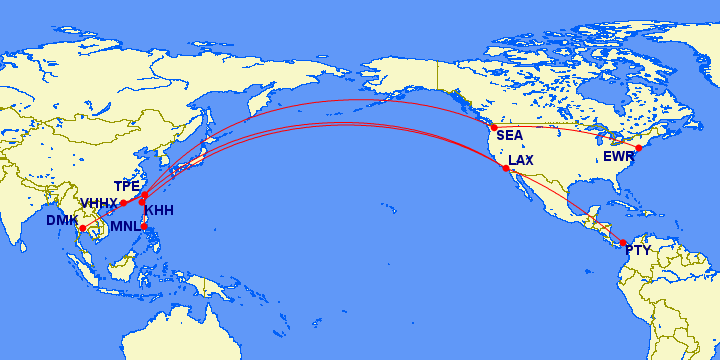 747-400M: 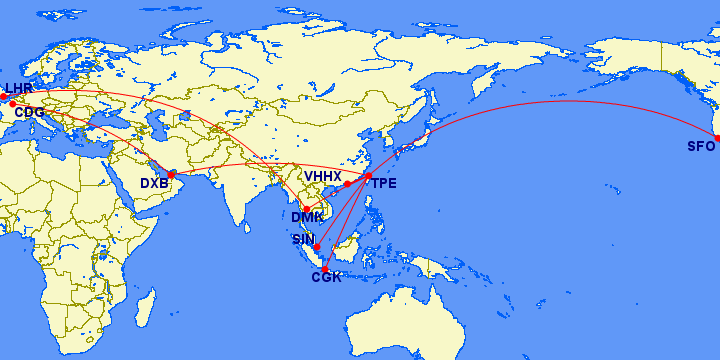 MD-11: 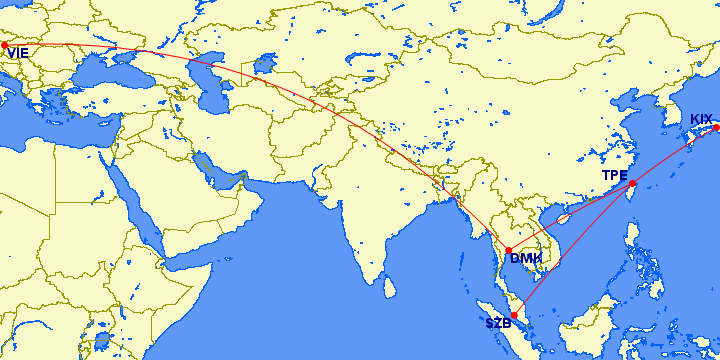 767-300ER: 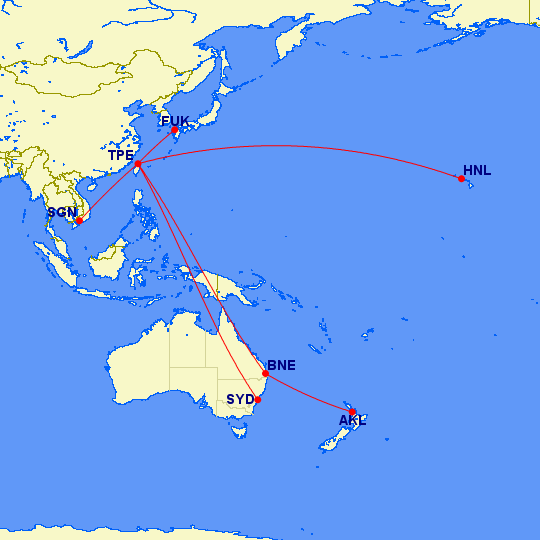 767-200: 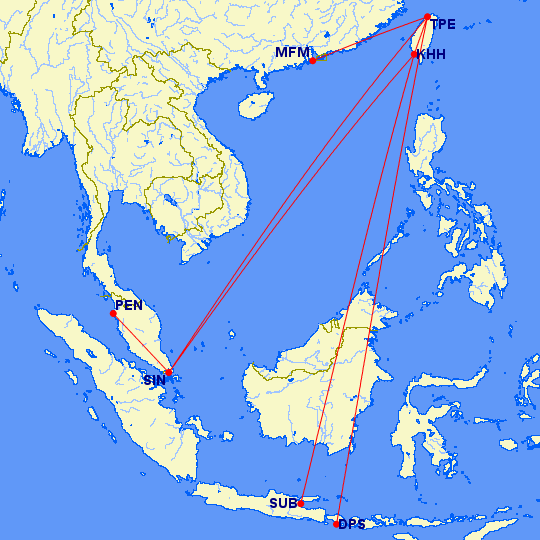 MD-90:  EVA Air 1998 v2 Flightplans Here EVA Air 1998 v2 Flightplans Here |
|
|
|
Post by chasensfo on Jan 20, 2023 23:46:48 GMT -5
//Singapore Airlines 1998 v3 (20JAN23; added variations for Micheal Pearson's repaints, added Nagoya flights I had left out, changed FAJS to FAOR, changed cruise speeds to AIG standard, re-numbered aircraft list for the easy installation of any future livery variations, added links to Ranmori Scythe's newly-hosted paints, added FS9 and FSX-P3Dv3 versions) Singapore Airlines (1972 - Present) IATA: SQ ICAO: SIA CALLSIGN: SINGAPORE Singapore Airlines is the national airline of Singapore, based in Changi Airport (SIN), and is widely regarded as one of the world's most prestigious airlines while also being among the largest Asian carriers. Singapore Airlines was founded after WWII in 1947 as Malayan Airlines, a joint venture between Singapore and neighboring Malaysia, which at the time were effectively one nation under British rule, to fulfill the need for peacetime air service in the region given the island geography. Early operations were largely flown with war surplus transports, and the first large modern aircraft to join the fleet was the Bristol Britannia in 1961. Soon after, the carrier began adding early jets such as the de Havilland Comet and the 737-100 in the mid-1960s. In 1965 after Singapore split from Malaysia in preparation for independence from Great Britain, the carrier was renamed Malaysia–Singapore Airlines, or MSA, and kept that identity until a decision was made in 1972 to split MSA into Singapore Airlines and Malaysian Airline System (MAS) respectively. Singapore Airlines got the better part of the deal, retaining the long-haul routes of MSA, which gave the carrier a head start in its global network. MAS, on the other hand, retained a sizable regional presence in Southeast Asia. Long-haul routes remained the focus of Singapore Airlines throughout its history, and as such, the vast majority of fleet types through the 70s, 80s, and 90s were aircraft capable of medium to long-range flying, such as the 707, DC-10, A310, A300, and 747. These widebody jets were also used on high-density intra-Asia routes, which were occasionally supplemented by smaller fleet types such as the 727-200, 757-200, and 737-300, most of which were short-lived with Singapore Airlines and operated in small numbers. In 1989, Singapore Airlines started a subsidiary called Tradewind Airlines to operate narrowbody regional flights with an MD-87. That carrier grew to add aircraft such as the Fokker 70 and 737-300 and expanded to many secondary cities in Asia such as Cebu (CEB), and Davao (DVO) which did not attract Singapore Airlines service previously. The carrier also had dedicated cargo aircraft for most of its existence, first with 707s but later 737-300s and a large fleet of 747s. Singapore Airlines Cargo operated on its own separate certificate with the "SQC" ICAO code and "SINGCARGO" callsign. Singapore Airlines itself grew into a massive 747 operator with both pure passenger and combi variants, and quickly amassed one of the world's largest 747-400 fleets, which the carrier dubbed the 'Megatop' in reference to the larger upper deck, when the type entered service with the carrier in the early 1990s. From the mid-1990s, this fleet was supplemented by quick-growing 777-200 and A340-300 fleets. By 1998, Singapore Airlines was serving most major global markets worldwide, with flights to just about every part of the world except for South America and a wide array of 5th freedom routes connecting 2 nations other than Singapore with full rights for ticket sales, such as flights between both Hong Kong (HKG) and Seoul (GMP) and San Francisco (SFO). As Singapore was geographically outside of the range of 747-400s and A340-300s, the carrier developed focus cities in places like Taipei (TPE) and Zurich (ZRH) to allow for several destinations to be flown onward from each airport during the week. As Singapore Airlines worked to modernize its fleet, the 747-300 fleet was dwindling away while just 1 A310-200 remained. The 747-200s and DC-10s were gone already along with the 737-300 cargo flights. The 777s mostly stuck to high-density regional routes in Asia at the time other than a few routes into India and Australia, while the A340s flew long-haul routes that did not need the capacity of a 747-400. The fleet of A310-300s flew all across Asia and served several secondary cities in Australia and had some routes to India as well. All aircraft in the fleet had at least one special livery except at the time for the A310s and 747-300s. These special liveries included the impressive Tropical Megatop livery that was flying on 2 747-400s at the time. Sadly, one would be lost in a high-profile accident in 2000 departing from a closed runway in TPE on departure to Los Angeles (LAX) and hitting construction equipment killing many on board in the carrier's only fatal accident to date. The second aircraft in the Tropical Megatop was repainted into the standard livery after the accident. Singapore was celebrating its 50th anniversary at the time, and a 747-400, A340-300, and 777-200 all wore special celebratory colors. Both Singapore and MAS ran high-frequency "shuttle" flights between SIN and the old Kuala Lumpur Subang Airport (SZB\WMSA), and that airport even had a dedicated terminal for flights to SIN. 777-300s began to join the fleet in 1999 while the carrier later became both an early and large operator of the 777-300ER in the 2000s. Singapore Airlines joined the Star Alliance in 2000 and continued global expansion, renewing its fleet with modern airliners like the A340-500, A380, and A350 while continuing to push the envelopes of in-flight cuisine, and comfort. Silkair was absorbed in early 1991 and Singapore Airlines began the operation of 737-800s and 737MAX8s. Silk Air and representative Singapore Airlines Cargo flight plans based on early 2000s plans by Ricky Tam are available separately. Singapore Airlines' first 777-300s are well represented in the pre-delivery testing phases at Paine Field (PAE) in the Boeing Factory 1998 flight plans but were not included in this schedule. All liveries are complete except for the 747-300 Combi, on both modern models and older ones: FAIB 747-400 (standard livery and 50th Anniversary livery) by Ranmori Scythe: drive.google.com/drive/folders/1aM_8Vy9TEIAq8WGtHtZXjNgltnF6NA8e?usp=sharingFAIB 747-400 fleet by Michael Pearson: drive.google.com/drive/folders/1NvKpeZ53WqS7FBhRczmZdpmOIB-ewWiOFAIB 747-300 by Ranmori Scythe: drive.google.com/drive/u/1/folders/1U0WGSC0nJ0SjI_cNhMap-UcwjQUSgV-0FAIB 747-300\300M fleet by Michael Pearson: drive.google.com/drive/folders/1NvKpeZ53WqS7FBhRczmZdpmOIB-ewWiOFSPX A340-300 fleet by Michael Pearson: drive.google.com/drive/folders/1NvKpeZ53WqS7FBhRczmZdpmOIB-ewWiOFSPX 777-300 fleet by Michael Pearson: drive.google.com/drive/folders/1NvKpeZ53WqS7FBhRczmZdpmOIB-ewWiOFSPX 777-200 fleet by Michael Pearson: drive.google.com/drive/folders/1NvKpeZ53WqS7FBhRczmZdpmOIB-ewWiOTFS A310-200\300 + AIA 747-300\400 (standard and 1000th 747 decal) by Eduardo Villanueva (FS9 Native): library.avsim.net/search.php?SearchTerm=Singapore_Airlines_fleet_1994.zip&CatID=root&Go=Search TFS A340-300\777-200 (special liveries included), AIA 747-400 Tropical Megatop\50th by Juergen Baumbusch (FS9 Native): www.juergenbaumbusch.de/Files/90s_Repaints_MarcH.zip747-400:  747-300\M: 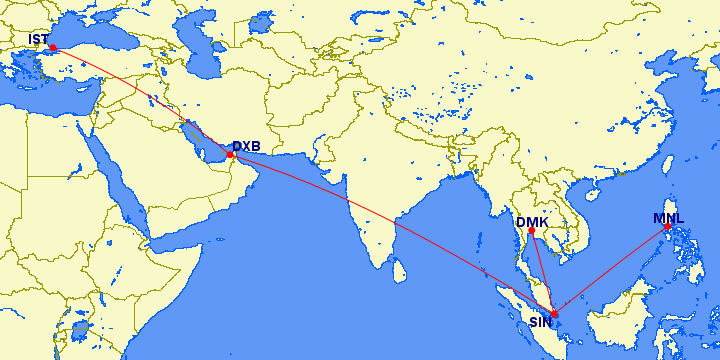 777-200: 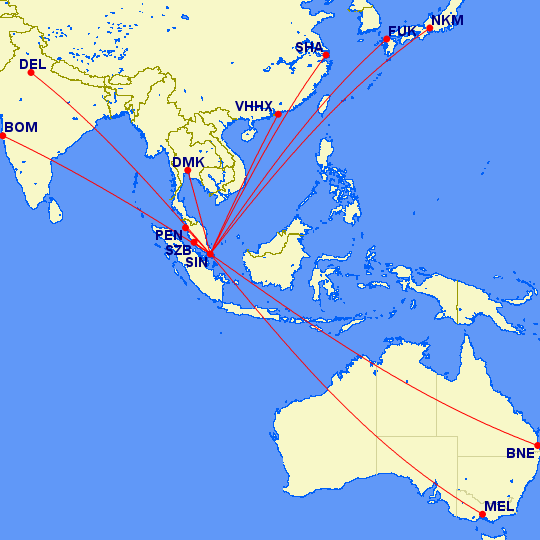 A340-300: 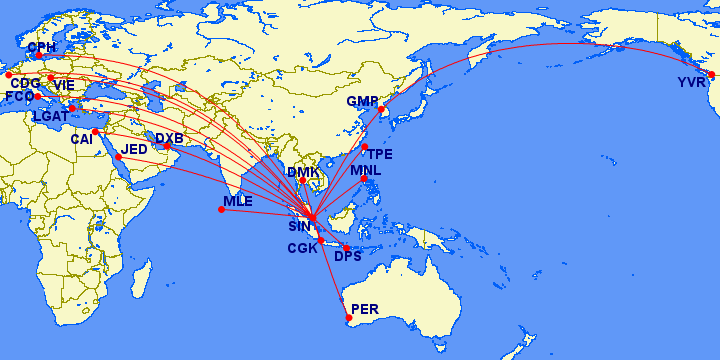 A310-200\300: 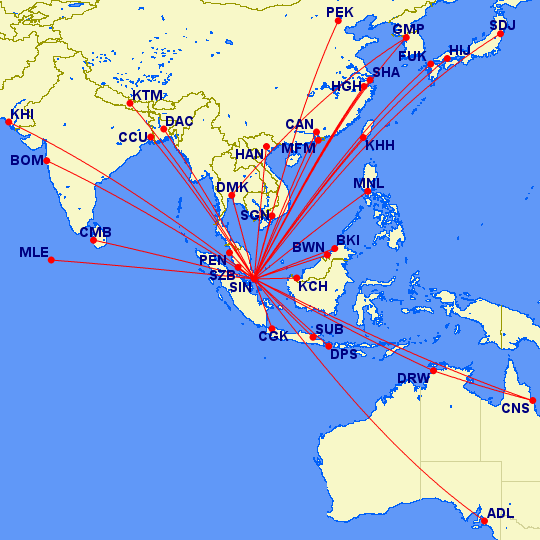 Download Singapore Airlines 1998 v3 Flightplans here Download Singapore Airlines 1998 v3 Flightplans here |
|
fernbe
Gate Agent
  1990's and 2000's
1990's and 2000's
Posts: 72
|
Post by fernbe on Jan 21, 2023 7:48:04 GMT -5
\\Japanese Government 1998 v3 (26DEC22; added lots of variations for the new repaints by RAI member ludo66x, changed aircraft order for better AI parking, changed cruise speeds to AIG standard, renumbered aircraft for easy install of future variations) Japanese Self Defense Force (JSDF) VIP IATA: NONE LISTED ICAO: JSDF (use VIP for parking) CALLSIGN: CYGNUS (or JAPAN AIR FORCE when Prime Minister is aboard) Maritime Safety Agency IATA: NONE LISTED ICAO: MSA CALLSIGN: JAPAN COAST GUARD (Simply the tail number was also often used, change this if you wish) JCAB Flight Inspection IATA: NONE LISTED ICAO: JCAB CALLSIGN: CHECK STAR The JSDF was using a pair of 747-400s for VIP transport of the Prime Minister and other dignitaries in 1998, as it had been for some time. The aircraft were based in Chitose(CTS) when they were not flying in a transport role, and often flew training flights in that area, which are simulated. VIP flights were based in Tokyo-Haneda(HND), and the aircraft most often traveled together when the Prime Minister would visit foreign nations. In 1998, the Japanese Emperor and his wife(who rarely used the 747s or any government aircraft) took a trip to the United Kingdom and Denmark, and this is simulated in these flightplans with real routing and approximate ground times. As only 1 flight to Hong Kong(VHHX) in these flightplans actually carried the Prime Minister, which is a rare trip with just 1 747 used, the "CYGNUS" callsign is appropriate on all but this flight, as that callsign was used whenever the Prime Minister was not on board (which was most flights the 747s made historically). The 747s were retired in 2019 in favor of 2 brand new 777-300ERs, and they currently sit stored in the US desert awaiting their fate. Ranmori Scythe has painted the FAIB 747-400s here: drive.google.com/drive/folders/1RAURo1eTqzIprjXwB3tuCXKBE_ZAQeRV?usp=sharing747-400:  Japan's Coast Guard is known as the Maritime Safety Agency, and the aircraft fly in a variety of roles from a total of 14 bases nationwide. Of these bases, HND is the largest and where the bigger aircraft are most frequently spotted. I have simulated these aircraft flying in training and transport roles, as they usually do in real life. The Maritime Safety Agency operated a large fleet of various helicopters in 1998, but I have excluded these aircraft. Included are several YS-11As and B200 King Airs, as well as 2 Saab 340s and Falcon 900s. The aircraft mostly fly between airports that commonly were visited by Maritime Safety Agency aircraft. The King Airs, Saab 340s and the Falcon 900s are still needed, the following repaints are available: FSP YS-11A fleet by RetroAI member ludo66x : drive.google.com/drive/folders/1SpMJOGUYAc6B4vIiMxeXUC6LeL9MYnN3B200 Kingair: 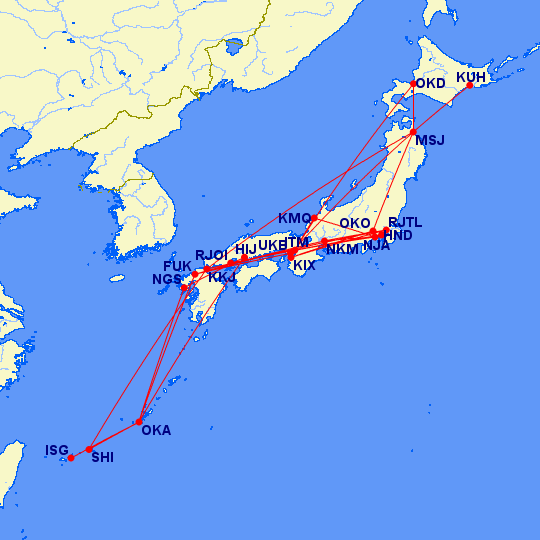 YS-11A: 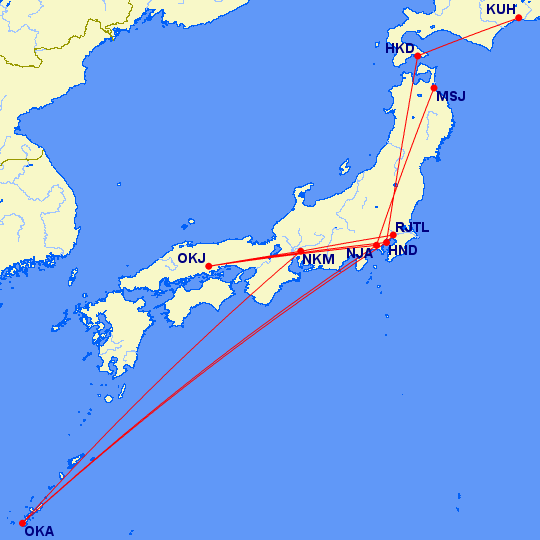 Falcon 900:  Saab 340: 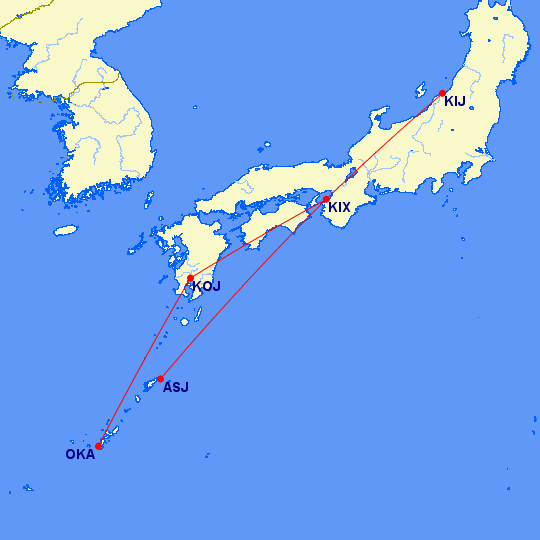 JCAB Flight Inspection is Japan's Civil Aviation authority which is responsible for calibrating the instrument landing systems and updating approaches into the various airports as needed, the role played by the FAA's "Flight Check" in the United States. The aircraft show up at airports and get in the way of traffic by performing touch-and-go landings or missed approaches for about an hour or so, then land and return to their HND base soon afterward, or fly on to the next airport in some cases. The flights are mostly done on weekdays, and most of the fleet is parked together on the JCAB ramp in HND on the weekend. Most of the fleet was made up of YS-11s in 1998, but there were 2 brand new Saab 2000s that had recently arrived and a Gulfstream GII and GIV as well. All repaints are completed: FSP YS-11A fleet by RetroAI member ludo66x : drive.google.com/drive/folders/1DORAycg6PWVmsaTr9ThAHnBSMJ3KhkssGulfstream II by RetroAI member ludo66x : drive.google.com/drive/folders/1mOLzIxqnakAMmzOhflQQkIRShY6l-tAWGulfstream IV by RetroAI member ludo66x : drive.google.com/drive/folders/1yIr3EhvbBGCYTJtMhLAcEDmDVii0bhIATFS Saab 2000 (FS9 Native): library.avsim.net/search.php?SearchTerm=jcab_turboprops_279018.zip&CatID=root&Go=SearchYS-11:  Saab 2000: 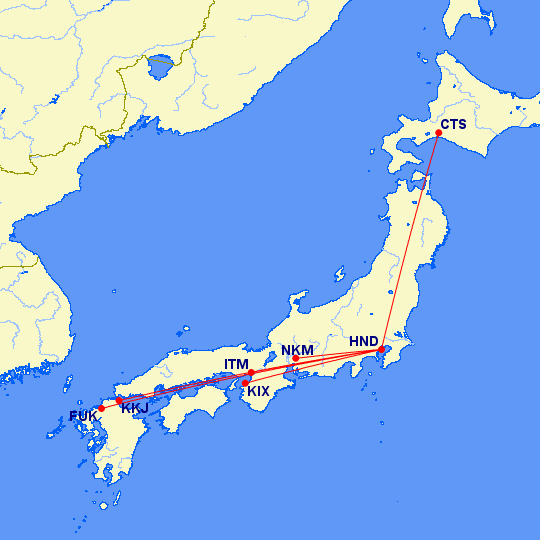 Gulfstream GII: 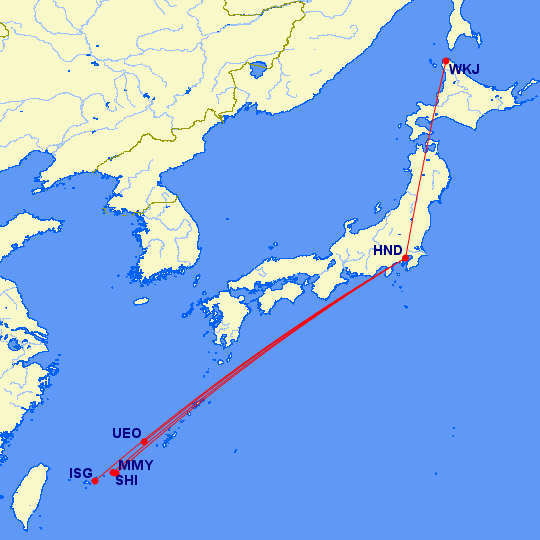 Gulfstream GIV: 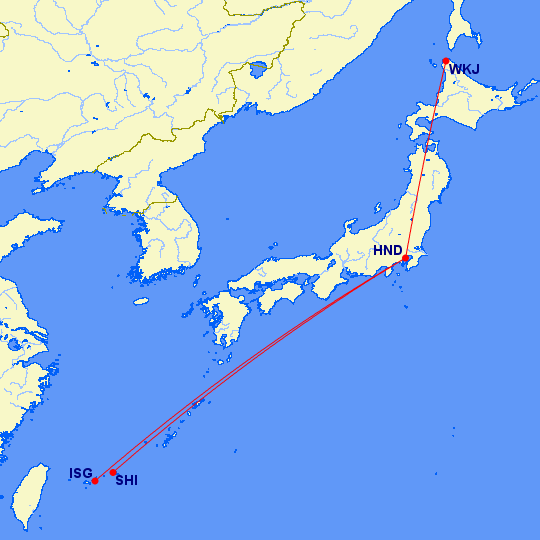 Japanese Government 1998 Version 3 Flightplans Here Japanese Government 1998 Version 3 Flightplans HereApparently I found a link of the Saab 340 JCAB repaints. Despite the oldest images of this livery in Airliners.net dates back to 2001-2002, it is quite possible that it was already in use in the late 90s: militaryaiworks.com/download-hangar/files-by-newest/download/8-aircraft-repaints/937-repaint-japan-coast-guard |
|
|
|
Post by chasensfo on Feb 10, 2023 23:12:44 GMT -5
\\Syrian Arab Airlines 1998 v4 (UPDATED 10FEB23; Added several missing aircraft, including 3 extra Tu-154s, that were most often sitting idle in DAM so now fleet size is correct, added the Yak 40s which only performed charter flights in 1998, added variations for Micheal Pearson's fleet repaints.) Syrian Arab Airlines (1961 - Present) IATA: RB ICAO: SYR CALLSIGN: SYRIANAIR Syrian Arab Airlines, better known as Syrianair, is the national airline of Syria, based iN Damascus (DAM). Syria is a nation with a deep history that is sadly better known in modern times for the bloody civil war and the resulting refugee crisis and the fact that the airlines of this nation have been blacklisted from much of the Western world for some time. In its first few decades of service, Syrian Air enjoyed expansive service across Europe and both DAM and Aleppo (ALP) were popular tourist destinations, renowned for their ancient art and architecture. Early on, the airline flew a mix of Western and Eastern equipment, with the Boeing 727 eventually becoming the backbone of the fleet 727 after operating other early jets like the SUD Caravelle and Hawker-Sydney Trident. The Caravelles flew on into the early 90s, long enough to be joined by the likes of the Tu-134B-3, Tu-154M, and 747SP. As was common at the time with countries in the Middle East, the national carrier also carried out most other aviation purposes in the nation, such as VIP transport and cargo flights, mostly using Eastern airframes such as the An-24, An-26, and IL-76TD alongside business jets like the Falcon 20 and some VIP-configured aircraft types from the main airline fleet. During the 1970s and 1980s, the carrier enjoyed expansive service across Europe serving most major cities, along with much of Northeast Africa and the Persian Gulf, using a mix of Western and Eastern equipment. Many routes were flown just once weekly, however, as was also common with Middle Eastern carriers at the time Also in line with rival carriers, many of the flights were scheduled late in the evening when the heat wasn't as hindering on operations, staff, and passengers. There had been periods of conflict during these years, but the airline stayed largely operational and hadn't lost much in the way of traffic rights to Western nations. By the early 1990s, the carrier was operating Western equipment all across Western Europe while its Tupolev fleet was mostly confined to the Middle East and Eastern Europe. Unfortunately, by the late 1990s, Syria was again beginning to destabilize, and the September 1998 OAG lists that almost every airline flying to Syria would discontinue all flights by the end of the month, and Syrian Air would terminate the majority of its international flights as well, with most of those routes never returning. The first A320s arrived at the end of the year, joining the aging active passenger fleet of 727-200s, Tu-134B-3s, Tu-154Ms, and a pair of 747SPs. The 727-200s were the backbone of the fleet and served most major Arabic cities as well as operating most flights into Europe. Most 727 domestic flights were stops on international trips, and much of the domestic network beyond the major few cities like ALP was on a charter basis. The Tu-134B-3s did not fly much, but still had a decent domestic presence and flew a few weekly scheduled flights to Kuwait City (KWI) as well as a weekly trip to Budapest (BUD). The Tu-154Ms also mostly stayed in the region but had longer flights to Bucharest (OTP) and Moscow (SVO) and operated charters regularly, including in VIP roles. 2 747SPs served high-density routes in the Persian Gulf and operated flights to India, London (LHR), and Paris (ORY) with the aircraft spending the night abroad for crew rest a few days per week. The 747SPs occasionally performed VIP flights for government visits abroad. At the time, about 2 dozen aircraft, including aircraft in various roles such as VIP-configured Tu-134B-3s and Falcon 20s, were operated in full Syrianair colors but were actually operated by the Syrian Air Force in military roles. Sadly, Syrianair would have a troubled next 2 decades, with a violent civil war in 2011 causing the airline to all but shut down multiple times and leading to sanctions that do not allow the carrier in many countries it used to serve, but the mere survival of the carrier is impressive. Please enjoy these better days of a historic carrier, and hopefully one day the airline can again enjoy long-haul flights and landing rights across Europe. To date, the airline has not recovered and rarely has more than a few airworthy active airplanes. Aircraft are in a mix of new and old liveries in the late 1990s and much of the fleet sat idle for weeks or months at a time in real life, so aircraft utilization is low for most of the Soviet-era aircraft and some of the 727s. Charters are based on destinations actually used in this time period, but there was little information on much of the stuff to the Middle East region, so I am sure many more smaller cities in the Persian Gulf not included here saw charters. As these plans are based on the final schedule before Syrianair's ongoing bans from the national airspace of many nations, this is the final form of the "glory days" of Syrianair flying across Europe. I assigned an extra 727 to an A320 which arrived the month after this schedule, and a DAM-LHR flight that didn't fit with the 747SP to a Tu-154M, which did sub to England from time to time. I have also added charters to some of the more idle aircraft, as were common in real life, but these charters were becoming less common with the instability in Syria and thus still expect to often see aircraft sitting idle on the then-busy Damascus ramp. VIP aircraft may be found in the Syrian government flight plans while the IL-76TDs are in the Syrian Arab Airlines Cargo flight plans. Flightplans by Vadim Stepanyuk and myself. All repaints are completed: FAIB 747SP fleet by Micheal Pearson: mpai4fs.com/2023/01/27/syrian-arab-airlines-747sp-94/FAIB 747SP by Christian Gold (FS9 Native): drive.google.com/file/d/1RIX6O7j7pvWcHs0zBNE76OyOsP0xyogp/view?usp=sharingTCAI Tu-154M by Micheal Pearson: mpai4fs.com/2023/01/27/syrian-arab-airlines-tu-154m/TCAI Tu-154M by Christian Gold (FS9 Native): drive.google.com/file/d/1fuscB77t7ZvMx3ZR-yLYGmtnOwbaiy0q/view?usp=sharingSBAI Tu-134B-3 fleet by Micheal Pearson: mpai4fs.com/2023/01/27/syrian-arab-airlines-tu-134/SBAI Tu-134B-3 by Christian Gold (FS9 Native): drive.google.com/file/d/1UVj2RGBkgSLAD2j2lQbeD354sZ1ki3p9/view?usp=sharingMRAI Tu-134 (FS9 Native): library.avsim.net/search.php?SearchTerm=rmai_syrianair_tu-134b-3_fleet.zip&CatID=root&Go=SearchAIA 727-200 fleet by Micheal Pearson: mpai4fs.com/2023/01/27/syrian-arab-airlines-727-200/AIA 727-200 (FS9 Native): library.avsim.net/search.php?SearchTerm=aia_b722_syrianair.zip&CatID=root&Go=SearchFAIB A320 by Micheal Pearson: mpai4fs.com/2023/01/27/syrian-arab-airlines-a320/DJC A320 IAE (FS9 native; also works with EVAI model): library.avsim.net/search.php?SearchTerm=ai320syr.zip&CatID=root&Go=SearchUTT YAK 40 by Micheal Pearson: mpai4fs.com/2023/01/27/syrian-arab-airlines-yak-40/747SP: 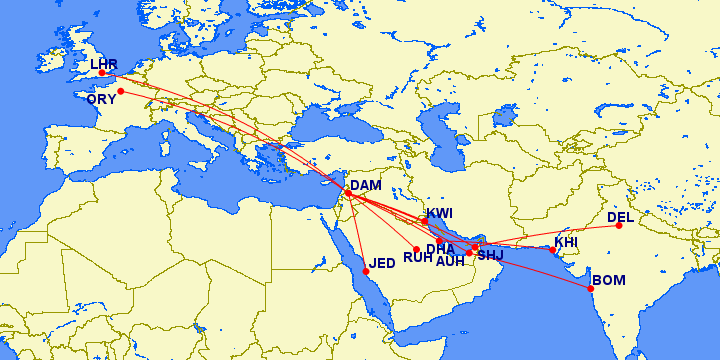 747SP Charters: 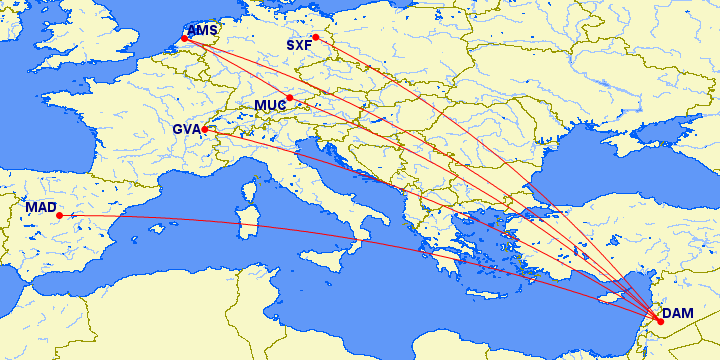 727-200: 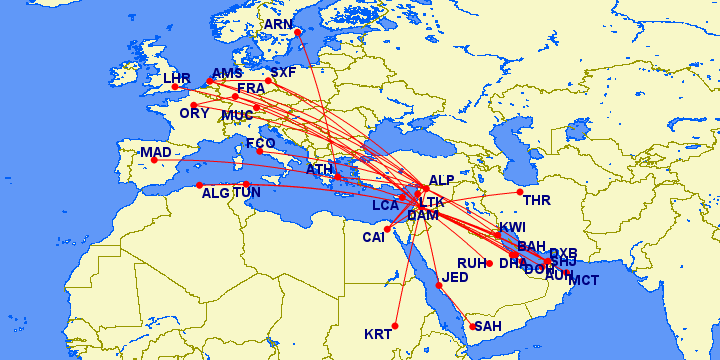 727-200 Charters: 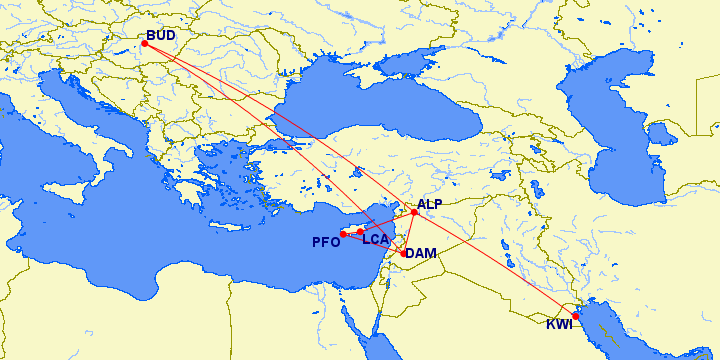 Tu-154M: 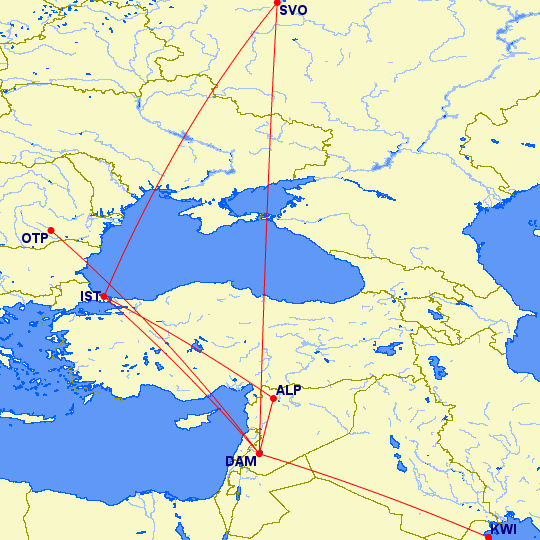 Tu-154M Charters:  Tu-134B-3:  Tu-134B-3 Charters:  A320 Charters:  Download Syrian Arab Airlines 1998 v4 Flightplans Here Download Syrian Arab Airlines 1998 v4 Flightplans Here |
|
|
|
Post by chasensfo on Feb 10, 2023 23:48:20 GMT -5
//Syrian Arab Cargo 1998 Syrian Arab Cargo operated by the Syrian Air Force (1961 - Present) IATA: RB ICAO: SYRC CALLSIGN: SYRIANAIR Syrian Arab Cargo is the cargo division of Syria's national carrier Syrian Arab Airlines, based in Damascus (DAM). It is unknown when cargo operations began exactly for this carrier as early An-24B and An-26 examples were combi models able to fly in cargo roles when not doing military and VIP transport, but pure-cargo operations began with the introduction of 4 IL-76Ms in 1981. The first 2 examples were painted in a white livery with the Syrian flag on the tail, while the more modern livery was applied to the final two. These aircraft operated both in civilian and government roles and were operated by the Syrian Air Force. Though the aircraft generally operated in Europe, Africa, the Middle East, and Western and Central Asia, they did occasionally end up in South America and other exotic global destinations. Sources indicate that throughout their history, these aircraft have spent the vast majority of their time idle in DAM. In 1994, the aircraft were converted to IL-76TDs. The aircraft went into the 2000s still wearing their original colors, while the new livery introduced to the Syrianair fleet in the late 1990s was applied to the fleet between 2004 and 2005. At least 1 of these aircraft is still airworthy today and used for humanitarian flights to pick up aid in Iran and other nations with the ongoing civil war and humanitarian crisis in Syria. These flightplans are representative based on a few routes I found evidence of and photo evidence as well. They are a little more active than they probably were in real life in order to appear in more destinations, but you will still usually see 2 or 3 on the ground in DAM most of the time with all 4 present for a few brief periods during the week. These plans in the assigned liveries will do a fine job representing the carrier from the 1980s up until the unrest of the late 1990s at which point they began mostly flying humanitarian roles and becoming much less common in Western nations. Micheal Pearson has painted the fleet here: mpai4fs.com/category/repaints/airlines/syrian-arab-cargo/IL-76TD:  Download Syrian Arab Cargo 1998 Flightplans Here Download Syrian Arab Cargo 1998 Flightplans Here |
|
|
|
Post by 747sp on Feb 12, 2023 4:09:16 GMT -5
Any news on LAN Chile? Very much waiting for that one ;-)
|
|
|
|
Post by chasensfo on Feb 12, 2023 15:58:20 GMT -5
Any news on LAN Chile? Very much waiting for that one ;-) I've only done the flights to SYD/AKL for them as they didn't serve any of the project areas where I did some flights (Japan, Brazil, etc). Unless someone else decides to do LAN, they are probably not coming out this year. The carriers from Argentina and ACES will be released much sooner. I'd like to see LAN Chile, but other than some small carriers here and there, this year I don't plan on finishing any large in-progress airlines myself except for SAS, Gulfair, Ansett+regionals, Air New Zealand+regionals and the Canadian\Air Canada regionals. Anyone whos interested is more than welcome to do other carriers. Those working on the 98 project probably already have the SCL pages in google drive, not sure about other cities but I can add them. |
|
|
|
Post by chasensfo on Feb 16, 2023 0:07:59 GMT -5
\\Iraqi Airways 1998 Iraqi Airways (1945-1991;2004 - Present) IATA: IA ICAO: IAW CALLSIGN: IRAQI Iraqi Airways is the national airline of Iraq, based in Baghdad (BGW), and is one of the oldest operating airlines in the world. Iraqi Airways was founded in 1945 in cooperation with BOAC, who assisted the company in their initial operation of 5 De Havilland Dragon Rapides initially used on services to Damascus (DAM). These primitive airliners were quickly joined and replaced by DC-3s, Vikers Vikings, de Havilland Doves, and Vickers Viscounts by the early 1950s. At the time, the airline was operated under the jurisdiction of Iraq's railway authority, which also regulated airfares on domestic services keeping them affordable for a fairly wide range of Iraqi citizens for several decades. Through the 1950s, expansion into Europe and across the Middle East occurred steadily, with routes stretching all the way to London (LHR) by 1955. Iraqi Airways planned to join the jet age in 1961 with a pair of Boeing 720 short-range jets, but the orders fell through, and the airline ended up first flying Trident jets and Tu-124s a few years later. In the 1970s, the airline began cargo operations with IL-76s while adding Boeing 707-300Cs and 747-200Cs for long-range services into Africa and across the Atlantic Ocean to New York (JFK) along with more non-stop services to Europe and Central Asia. An-24s, 737-200s, and 727s joined the fleet in decent numbers afterward along with the ultra-long-range 747SP. Iraqi Airways peaked in terms of global network size in the 1980s, enjoying traffic rights across the world and with Iraq itself a popular leisure destination. This all abruptly changed when Iraq's leader, Sadam Hussein, invaded Kuwait against stern warnings from NATO and the United Nations in 1991. The resulting Gulf War saw Iraq topple, with its military and government largely left in shambles, as a nation with international sanctions grounding its airline almost entirely for more than a decade. In addition to the grounding of the national carrier, the US and UK implemented a no-fly-zone over the nation which prevented the vast majority of flights, private, government, or commercial, from operating. During the grounding, Iraqi Airways made numerous attempts to restart but was limited to some 1992 and 1993 domestic flights for a brief period and occasional approval for Hajj flights to Jeddah (JED) during the holy month later in the 1990s. Otherwise, the aircraft were mostly stored in BGW, with many of them deteriorating to the point where they would never operate again, essentially becoming spares. Most of the aircraft which were kept airworthy and used for rare charters were kept in Amman (AMM), while most aircraft stored in BGW were not airworthy. A few aircraft were stored in other locations, such as Tozeur, Tunisia (TOE). An A310 and some other aircraft were returned to lessors rather than kept by the carrier and stored. Interestingly, 2 747-200Cs, stored in Tehran (THR) after being ferried there for safe refuge during Operation Desert Storm, were kept by the Iranian government and converted into VIP transport aircraft, reportedly as revenge for Iraq's role in the Iraq-Iran war of 1988. Scheduled services resumed in 2004, at which time the airline reorganized as Iraqi Airways Company using the assets of the grounded original carrier. Initially, operations resumed using re-activated 727-200s, followed by 737-200s with the aircraft receiving a slightly refreshed livery after a decade of fading in the desert climate. AMM was the first destination for the restarted carrier, followed by a few domestic routes in 2005 and services to THR soon after. Various aircraft types were operated in small numbers from that point, both operated by other carriers and by Iraqi Airways itself. Gradually from the late 2000s to the early 2010s, the airline added more modern aircraft such as the 737-400, 767-200, 767-300, 777-200, 747-400, 737-800, and CRJ-900 and began receiving the authorization to return to England and other former destinations in Europe and Asia. Growth remained steady, heavily fueled by the needs of US contractors in the region, and today the airline is alive and well with modern long-range aircraft such as the 787-8 Dreamliner and 777-200LR in the fleet along with other types such as the 737MAX, A220-300, A321, and A330. Though the airline was effectively grounded in 1998, I found good information on where each aircraft was stored and discovered that late 1990s Hajj flights were operated. BGW, which had no scheduled flights at the time, will be littered with Iraqi Airways aircraft like it was in real life, and the aircraft will also pop up as eye candy in a few other locations. Stored aircraft do twice weekly touch-and-go landings in the middle of the night in order to stay active, while I put 2 727-200s aside for Hajj flights. Many domestic airports in Iraq today were military airfields before the Gulf War and did not become commercial airports until the 2000s. As such, very few cities were used for Hajj flights. With the terminal in BGW rarely active, the fleet was mostly parked around the terminal apron. The 737-200s and IL-76s aren't listed in the JP Fleets book with the rest of the fleet, but 1 737-200 and 1 IL-76 are confirmed to have been stored in BGW at the time, so they are included. Parking at BGW, as there was no other service, will not be an issue. However, if you want to make sure the planes don't park on live gates in AMM, IST, etc, however, then you may assign "RAMP" parking and "XIAW" codes. These plans will represent the airline post-1993 after the An-24s left and the short-lived domestic flights ended. Iraqi Government Falcon 20\900s, also stored in BGW at the time, are not included and will be eventually uploaded separately, though I don't intend to bother to make those before repaints exist. All repaints are completed: FAIB 747-200C by Brian Wheatley: brians-retro-ai.com/repaints/iraqi-airways-boeing-747-200c/FAIB 747-200C by Juergen Baumbusch: www.juergenbaumbusch.de/?p=11768FAIB 747SP by Juergen Baumbusch: www.juergenbaumbusch.de/?p=11770NAAI 707-300C by Brian Wheatley: brians-retro-ai.com/repaints/iraqi-airways-boeing-707-320c/RATS IL-76TD by Christian Gold (FS9 Native): drive.google.com/drive/folders/1V7bHX8ouvovPceCOixrtcR8dJfzLXoRpAIA 727-200 by Brian Wheatley: brians-retro-ai.com/repaints/iraqi-airways-boeing-727-200/FAIB 737-200C by Brian Wheatley: brians-retro-ai.com/repaints/iraqi-airways-boeing-737-200c/727-200 Hajj Charters:  Stored Aircraft Locations: 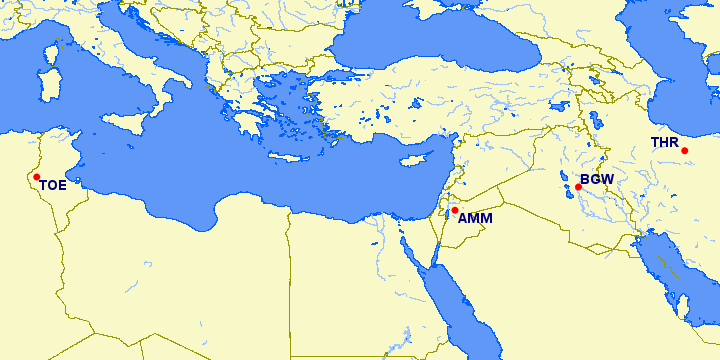 Download Iraqi Airways 1998 Flightplans Here Download Iraqi Airways 1998 Flightplans Here |
|
|
|
Post by 747sp on Feb 16, 2023 10:25:20 GMT -5
|
|
|
|
Post by chasensfo on Feb 19, 2023 1:23:24 GMT -5
\\Iberia 1998 v2 (18FEB23; Changed FAJS to FAOR, added Binter Canarias DC-9 variations for Micheal Pearson's paints) Iberia (1927 - Present) IATA: IB ICAO: IBE CALLSIGN: IBERIA Iberia operated by Air Europa (1988-2001) IATA: IB ICAO: AEA (use IBE for parking) CALLSIGN: EUROPA Iberia operated by Air Atlanta Icelandic (1997-2006) IATA: IB ICAO: ABD (use IBE for parking) CALLSIGN: ATLANTA Iberia operated by Viva Air (1989;1998-1999) IATA: IB ICAO: VIV (use IBE for parking) CALLSIGN: VIVA Iberia Regional operated by Air Nostrum (1997 - Present) IATA: YW ICAO: ANE (also use IBEX) CALLSIGN: NOSTRUM AIR Iberia Regional operated by Denim Air (1998-2010) IATA: 3D ICAO: DNM (also use IBEX) CALLSIGN: DENIM Iberia Regional operated by Binter Canarias (1988-1999) IATA: NT ICAO: IBB (Also use IBE) CALLSIGN: BINTER Iberia Cargo (1996-1999) IATA: IB ICAO: IBEC CALLSIGN: IBERIA Iberia Cargo operated by Cygnus Air (1992-2000) IATA: IB ICAO: RGN (also use IBEC) CALLSIGN: CYGNUS AIR Iberia Cargo operated by Aer Turas (1998) IATA: QT ICAO: ATT (also use IBEC) CALLSIGN: AER TURAS Iberia is the national airline of Spain, based in Madrid (MAD), and is one of the oldest operating airlines in Europe. Iberia was founded in 1927 as Iberia Líneas Aéreas de España, S.A. Operadora, Sociedad Unipersonal, using a German-built Rohrbach Roland, and was partially funded by Lufthansa. The carrier was Spain's flag carrier from the beginning and also held important postal contracts in its early days. The following year in 1929, the airline was merged with rival carrier CLASSA, Compañía de Líneas Aéreas Subvencionadas S.A, and the Iberia name was kept though CLASSA was the surviving carrier. Operations grew steadily until 1937 when the Spanish Civil War broke out, with Iberia being granted a monopoly on air carrier routes in Spain afterward in 1940. In 1946 after WWII, Spain decided to allow for competition with Iberia. The predecessor to Aviaco, was also government-controlled and largely stayed out of competition with Iberia, with both airlines independent but thus operating under cooperation with one another. By the time WWII was over, Iberia had amassed new modern surplus transports from the war, including DC-3s and DC-4s, and had launched flights all across Europe and Northern Africa. These flights were soon expanded into South America, making Iberia one of the first semi-global carriers in the new post-war Europe. Iberia absorbed Aviaco in 1959 and shortly after added its first DC-8 and Caravelle jet aircraft. Through the 1960s, Iberia expanded into the United States and other new markets while the early 1970s saw the arrival of very early DC-10s and 747s to become the first widebody types for the carrier. By this time, Barcelona (BCN) was a large hub for the carrier, with focus cities all over Spain. Iberia fueled North American expansion by signing agreements with carriers in South and Central America to feed its operation, and began more routes in the region. Douglas DC-9s and Boeing 727s became the mainstay of the fleet through the 1970s, with Iberia eventually operating large numbers of both and retiring its mainline props. By the 1980s, Iberia was one of the largest airlines in Europe, operating on both dense business routes and holiday markets. Cities in Europe like London (LHR\LGW) and Paris (CDG\ORY) were served from several cities in Spain by then, and A300 jets arrived for deployment on high-density routes. In 1987, Iberia founded Amadeus, the first major universal reservations database, along with Lufthansa, Air France, and SAS. The following year in 1988, Iberia founded Binter Canarias as a regional subsidiary serving some Mediterranean routes initially while a deal was reached with Air Europa to operate some 737-300s on behalf of Iberia in their full livery. In 1989, a similar but short-lived deal was reached with Spanish carrier Viva Air. In the 1990s, Iberia received 757-200s and A320s to replace its aging DC-9 and 727 fleets, and the airline expanded its contracts to include Air Atlanta Icelandic who would operate 747s and L-1011s on Iberia's behalf. 2 DC-8-62Fs were also operated as Iberia Cargo by Cygnus Air from 1992, joined by an Iberia-owned DC-8-71F in 1996. In 1997, Iberia Regional flights operated by Air Nostrum were started, followed in 1998 by Dutch carrier Demin Air which would become a subsidiary of Air Nostrum in 1999. The 1998 fleet consisted of 747-200BMs primarily dedicated to a route to Tokyo (NRT) via Moscow (SVO) while the 747-200Bs mostly flew to North and South America. A decent number of A340-300s were in the fleet serving both high-density routes to the Canary Islands and long-haul trips to North America, South America, and Africa. DC-10-30s were being used mostly to South America and the Caribbean with flights to Miami (MIA) as well. A300s, DC-9-32s, and A320s mostly did flying around Western and Central Europe, while 727s and 757s had flights to West Africa as well. A DC-9-32, DC-9-34, and a pair of DC-9-34CFs were based in MIA and flying mostly to Central America taking connections to and from Iberia's MIA flights. In addition to these aircraft, Air Atlanta Icelandic was flying a 747-100, 2 747-200s, and an L-1011 on high-density leisure routes for Iberia while Air Europa was operating a pair of 767-300s, a few 757-200s, and several 737-400s for Iberia as well. Viva Air was again flying for Iberia with a white 737-300 being operated for the carrier. Meanwhile, Aviaco and Binter Canarias were operating independently with DC-9s and\or MD-80s but would soon be fully absorbed by Iberia. A large fleet of Fokker 50s was being operated for Iberia Regional, along with some ATR72s and a lone ATR42 in the full colors of Italian Air Sicilia. The first 3 CRJ-200s had arrived for Air Nostrum and were deployed on routes to Frankfurt (FRA) from smaller cities. 30% stake was purchased by Aerolineas Argentinas as Iberia continued to expand across South America. In 1999, Iberia was a founding member of oneworld, where it continues to be an important member. Iberia would modernize the fleet with more A340s, including the A340-600, and A330s, while eventually adding A350s and founding the massive IAG group, which also owns British Airways and Aer Lingus, in the 2010s. Iberia also created a low-cost subsidiary named LEVEL to compete with Norwegian and is today still a major airline with flights all across the world. For some reason, only the Binter Canarias DC-9s were included in the OAG, but the Binter ATR and CASA flights were not listed, nor was Binter's Mediterranean subsidiary. Aviaco was not included as that carrier was completed separately. Cargo flights are representative, though the routes flown are real. Flightplans by Vireak Ball and myself. All repaints are completed: FAIB 747-200: library.avsim.net/search.php?SearchTerm=faib_747-200_ibe.zip&CatID=root&Go=SearchFAIB 747-100: library.avsim.net/search.php?SearchTerm=faib_747-100_ibe.zip&CatID=root&Go=SearchFSPX A340-300 by Florian van der Kleij: drive.google.com/file/d/18sAi-kzTORwM7zQN8efGWE8mjg-cIeEl/view?usp=sharingTFS A340-300 by Florian van der Kleij: drive.google.com/file/d/1Sd6nDELNxQm3BMcXSKyFpFbCJuIdmwc7/view?usp=sharingDWAI L-1011 by Florian van der Kleij: drive.google.com/file/d/1k3lvwjeCa-ZDNhUsLE_ezh4TnyF6KLV0/view?usp=sharingAIM DC-10-30: library.avsim.net/search.php?SearchTerm=aim_dc11030_iberia_ec-dea.zip&CatID=root&Go=SearchFAIB 767-300 by Florian van der Kleij: drive.google.com/file/d/1U4VE9KgZutzZk9UJBDtJW9Ogmu8AvUDy/view?usp=sharingTFS A300B4 by Florian van der Kleij: drive.google.com/file/d/1CLB9jQ0V4VRux03olr8RH8sqCUqgT5zM/view?usp=sharingAIG 757-200 by Florian van der Kleij: drive.google.com/file/d/1EFeblb260NM5lVO5SdkqPS7ZmPl9ebFG/view?usp=sharingAIA 727-200 by Florian van der Kleij: drive.google.com/file/d/1d2XJnGAY5ZbSFZXNmLNZvLM-9c1uAWWI/view?usp=sharingFAIB A320 by Florian van der Kleij: drive.google.com/file/d/1SEVKs-4sYz4wjc8VYiC26jL7clAVIwdu/view?usp=sharingAIA MD-87 by Florian van der Kleij: drive.google.com/file/d/1D6Z8y3vFUhTEqJ_XHMtLEOBE6MLg0Ble/view?usp=sharingFAIB 737-400 by Florian van der Kleij: drive.google.com/file/d/1CosCupQr0nXB_QRL8WmkS2LcpbmwEcMx/view?usp=sharingFAIB 737-300 by Florian van der Kleij: drive.google.com/file/d/17yx86qxQ2HbKTFVB1WQ5QCicBycafQvx/view?usp=sharingAIG DC-9-30 by Florian van der Kleij: drive.google.com/file/d/1mQYh03edVUjD5VqbRvvIeEVPu8EOHnS3/view?usp=sharingAIG DC-9-30 Binter Canarias by Michael Pearson: mpai4fs.com/2023/02/09/binter-canarias-dc-9-30/HJG DC-8-62F: simviation.com/hjg/aircraft2/AI/AI%20DC-8-62F%20Textures/AI%20DC-8-62F%20Iberia%201995%20EC-EMD.zipHJG DC-8-63F: simviation.com/hjg/aircraft2/AI/AI%20DC-8-63F%20Textures/AI%20DC-8-63F%20Aer%20Turas%202001%20EI-CGO.zipAIA DC-8-71F: library.avsim.net/search.php?SearchTerm=aia_dc871_iberia_cargo.zip&CatID=root&Go=SearchOSP ATR72-200 Air Nostrum by Florian van der Kleij: drive.google.com/drive/folders/1NlFrFv61BIrtgTPNc-dXnbNiXX5Z1eBBOSP ATR42-300 Air Nostrum by Florian van der Kleij: drive.google.com/drive/folders/1NlFrFv61BIrtgTPNc-dXnbNiXX5Z1eBBAIM CRJ-200 Air Nostrum by Florian van der Kleij: drive.google.com/drive/folders/1NlFrFv61BIrtgTPNc-dXnbNiXX5Z1eBBNAAI Fokker 50 Denim Air by Florian van der Kleij: drive.google.com/file/d/18We3Mmzwt_cCrkQBbzJg7kjhVwWF7xr7/view?usp=sharing747-200BM: 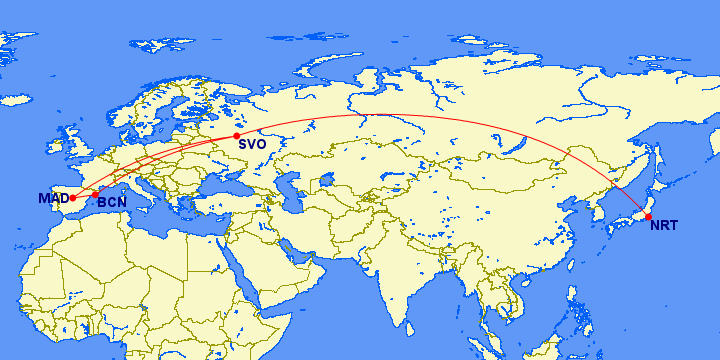 747-200B:  747-200 operated by Air Atlanta Icelandic: 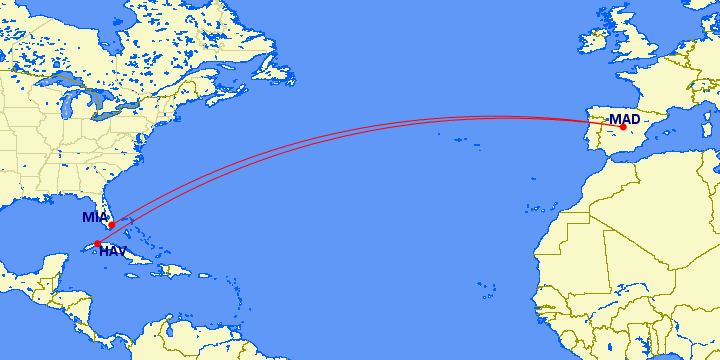 747-100 operated by Air Atlanta Icelandic:  A340-300:  DC-10-30: 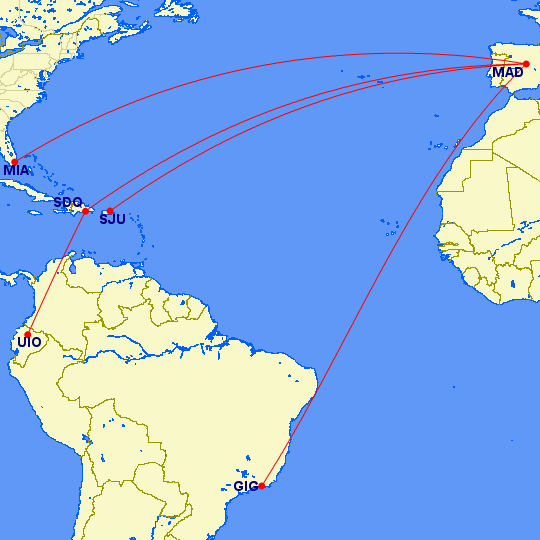 L-1011-350-1 operated by Air Atlanta Icelandic:  767-300 operated by Air Europa: 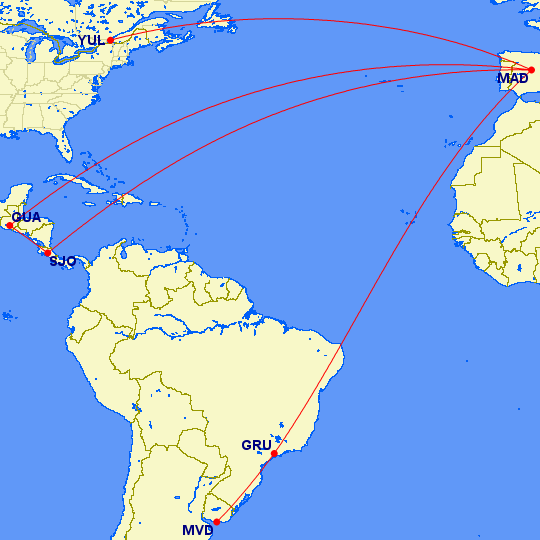 A300B4-100\200:  757-200: 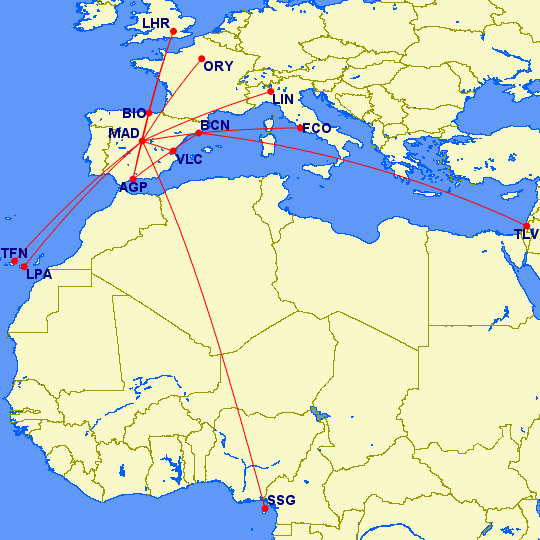 757-200 operated by Air Europa: 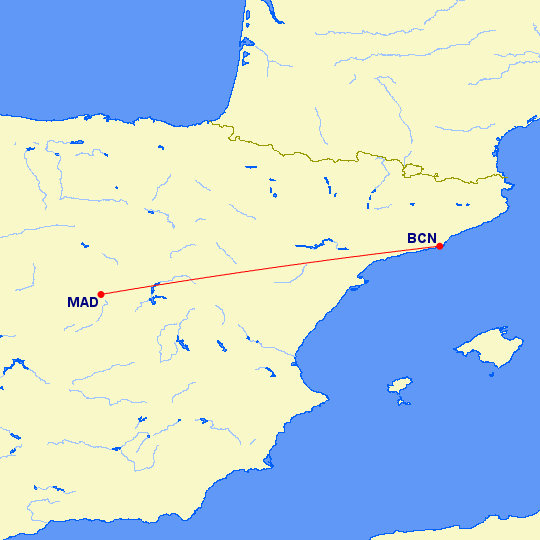 727-200:  A320:  MD-87: 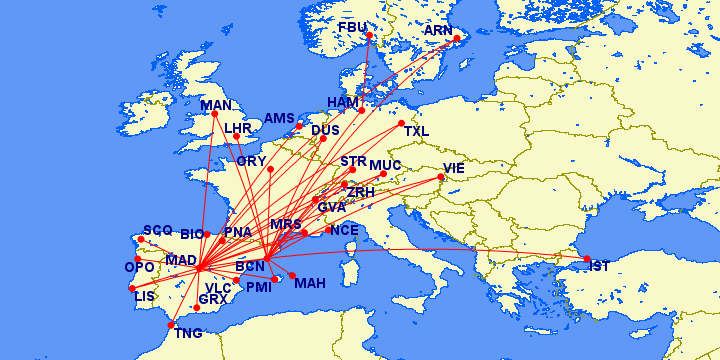 737-300\400 operated by Viva Air\Air Europa: 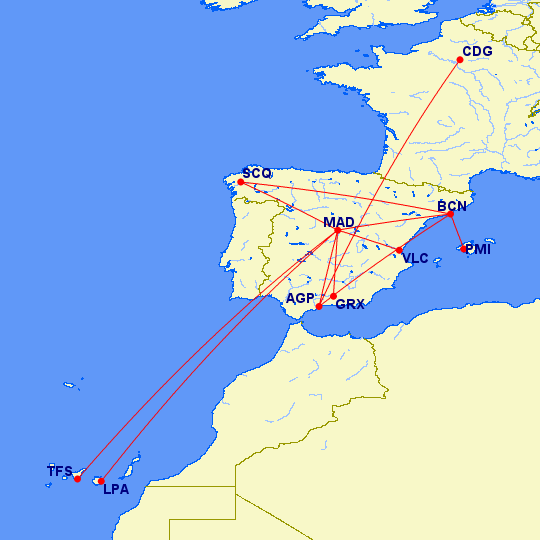 DC-9-32: 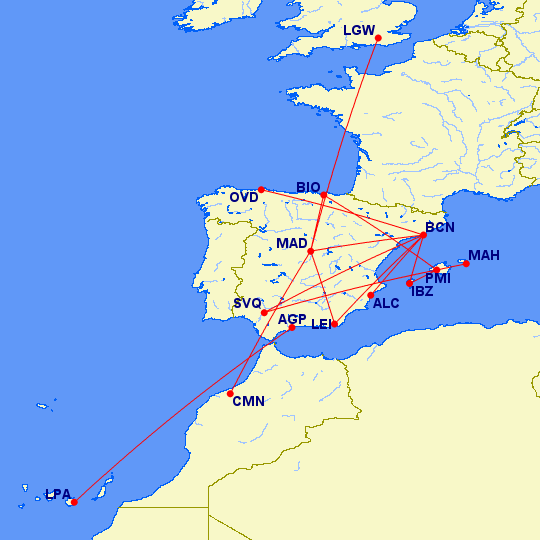 DC-9-32\34\34CF MIA-based:  DC-9-32 operated by Binter Canarias:  DC-8-62F\63F\71F Cargo: 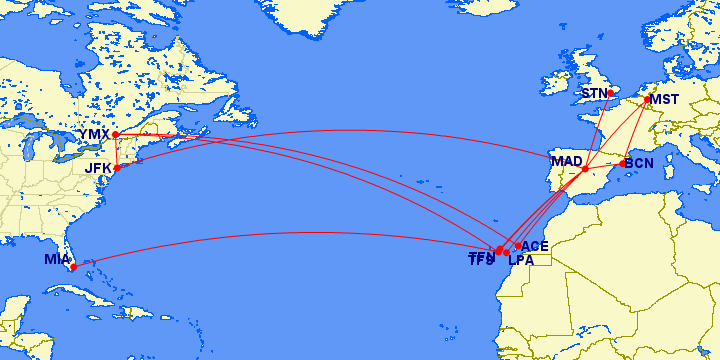 ATR72-202 operated by Air Nostrum: 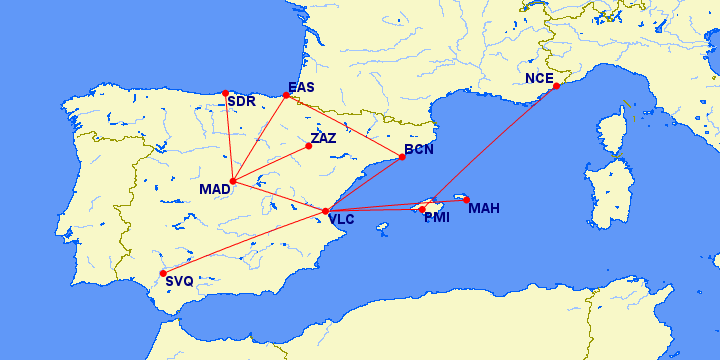 ATR42-300 operated by Air Nostrum: 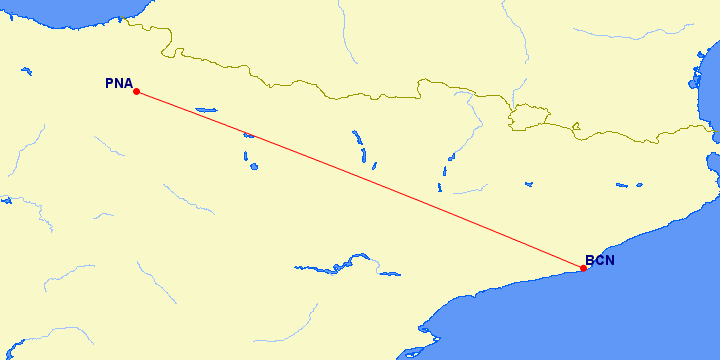 CRJ-200 operated by Air Nostrum: 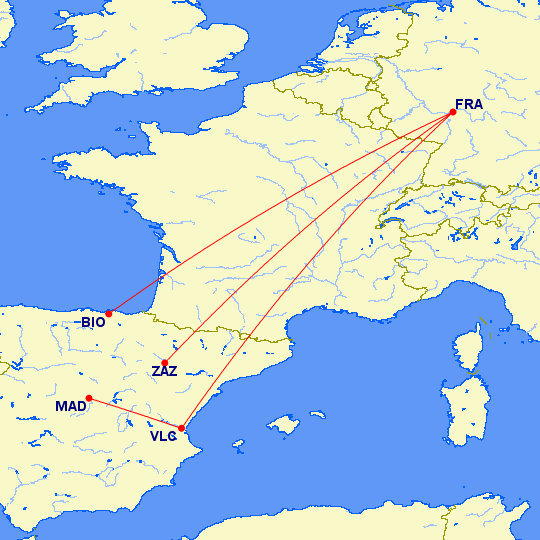 Fokker 50 operated by Air Nostrum\Denim Air: 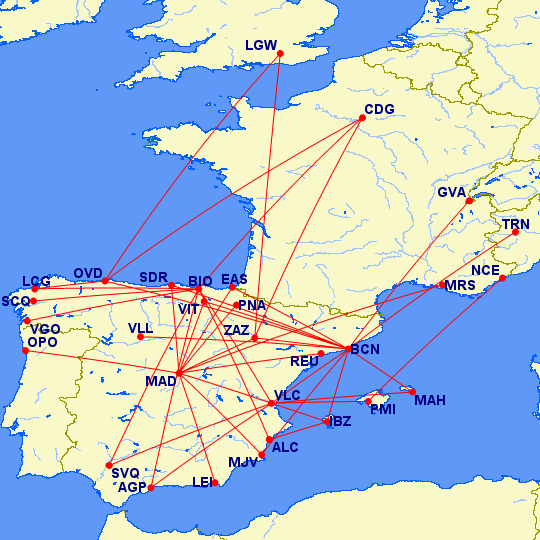 Download Iberia 1998 v2 Flightplans Here Download Iberia 1998 v2 Flightplans Here |
|
|
|
Post by chasensfo on Feb 19, 2023 7:22:48 GMT -5
//Air Botswana 1998 v3 (changed FAJS to FAOR) Air Botswana (1972 - Present) IATA: BP ICAO: BOT CALLSIGN: BOTSWANA Air Botswana is the national airline of Botswana, which has the unfortunate distinction of being the HIV infection capital of the world. As such, the nation is always struggling and there is little demand for travel, however, safaris and natural monuments in the area make Botswana a very popular tourist destination for South Africans and other Westerners in the region, so the airline has been able to thrive off international routes. Initially, the airline was formed after the failure of Botswana National Airways and operated small props in the region. In the mid-1990s, a BAe-146 was added providing jet service, but this aircraft was short-lived in the fleet and gone by 1998. The year 1998 was interesting for Air Botswana. The company had 3 ATR-42-300s and a single ATR-42-500, which was in full Air Littoral colors with Air Botswana titles. Sadly, all 3 of the ATR-42-300s were destroyed simultaneously in 1999 when a suicidal pilot, who had untreated mental health issues and had been suspended from flying, stole one of the ATRs and crashed it into the other 2 ATRs sitting at the terminal, killing himself, but with no other human casualties. One would assume that a very small carrier losing 3/4 of its fleet in an impoverished and tiny nation would not survive, however, Air Botswana did indeed recover and make it to the present day. Air Botswana's main focus continued to be flights to/from South Africa, where passengers connect onward to Maun(MUB) and Gaborone(GBE). Due to the demand and the amount passengers are willing to spend on travel on the way to their lavish safari resorts, the MUB-JNB route was at one point the most expensive commercial flight when comparing the cost of the ticket per mile in the world, which no doubt helped the recovery of Air Botswana. The flights to JNB operate several times daily, but the rest of the network is mostly in the 1-3 weekly frequency range. GBE and JNB are where you'll see the highest concentration of these aircraft. The airline is alive today, operating ATRs and an EMB-170. All repaints are completed: OSP ATR42-500 Air Littoral hybrid by Nils Gosselin: drive.google.com/drive/folders/11NemG0B3RY_OF_hvf32UV0dwgdhBIiT-OSP ATR42-300 Fleet by myself: drive.google.com/drive/folders/1vih2wDrZrMwL7rlYOvJz67tP5_2_jsWv?usp=sharingATR 42: 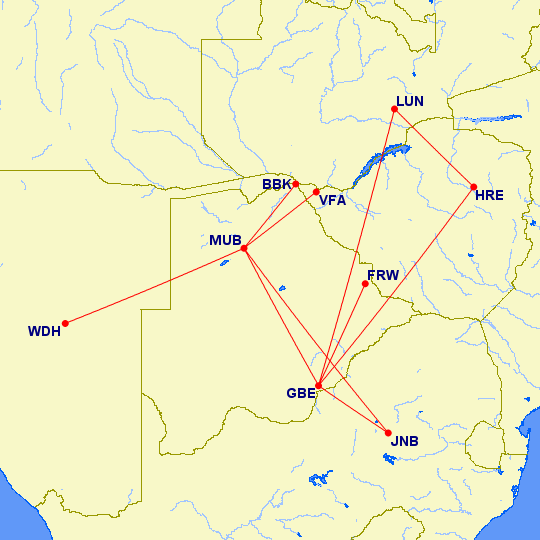 Download Air Botswana 1998 v3 Flightplans Here Download Air Botswana 1998 v3 Flightplans Here |
|
|
|
Post by chasensfo on Feb 22, 2023 5:24:32 GMT -5
\\\Meridiana 1998 v2 (22NOV23; added 1 MD-80 leased from Aero Lloyd, added variations for Micheal Pearson's fleet repaints, changed aircraft order for better AI parking, changed cruise speeds to AIG standard) Meridana (1964-2020) IATA: IG ICAO: ISS CALLSIGN: MERIDIANA Meridiana, based in the Sardinia region of Italy at Olbia Costa Smeralda Airport (OLB), was one of Italy's most prominent airlines for many decades and went through several named changes and rebrandings in its 55-year history. The airline was founded in 1963 as Alisarda, primarily flying early DC-9 types, and was operationally based in Milan (LIN\MXP). Alisarda operated a combination of scheduled and charter flights, with all scheduled flights being strictly domestic. The carrier rebranded as Merdiana in 1991, retaining a modified version of its original livery, and launched scheduled international flights that same year for the first time. By the time of the rebranding, the smaller DC-9s had been replaced with larger MD-80s, which quickly became the backbone of the fleet, alongside several DC-9-51s. BAe-146-200s were added, while a lone Spanish-registered BAe-146-300 was also operated for a short time when the quad jets first joined the fleet. Leases became a large part of Meridiana's fleet strategy, and over the years, the carrier-operated aircraft registered in several European nations, especially Ireland. By the mid to late 1990s, all routes were scheduled and charters had become irregular, though some seasonal destinations were served on an infrequent basis similar to charter operations. The BAe-146s primarily operated international services from Florence (FLR), which had been neglected by Alitalia and had little competition at the time. Most other international routes, and most domestic routes, were operated by DC-9-50s and MD-80s. Regional services were also operated from 1997 until October of 1998 by a small start-up carrier named Aviosarda (or Air Sardinia) which flew a lone ATR-42 in the full colors of failed Hawaiian inter-Island carrier Mahalo Air. By 1998, Meridiana served most major Western European cities such as London (LGW), Frankfurt (FRA), Paris (CDG), and Amsterdam (AMS), along with an expansive domestic route network primarily connecting mainland Italy with Sardinia but also flying a few high-density routes across mainland Italy. Unlike most Italian airlines, Merdiana utilized various airports in the same city, for example, the carrier served Milan via 3 airports; BGY, LIN, and MXP. The airline's growth would continue into the early 2000s with the addition of widebody Boeing 767-300s and Airbus narrowbody modern aircraft. In 2010, Meridiana purchased a majority share in Alitalia's charter subsidiary, Eurofly, at which time the airline rebranded as "Meridana Fly" for several years. A330s were added to the fleet around the same time. Shortly after acquiring Italian charter carrier Air Italy in 2013, the airline reverted back to the "Meridiana" name and branding. Meridiana would fly on until 2018, when Qatar Airways, who had purchased a majority stake in the airline, decided to adopt the former Air Italy branding for the carrier and shut down Meridiana to re-organize as a new carrier using the Air Italy name. Though this technically ended the 55-year history of the carrier, Air Italy retained the "IG" IATA code and flew on as a global carrier launching flights from its MXP hub as far away as San Francisco (SFO) before shutting down in 2020 (pre-pandemic) after years of heavy financial losses. The carrier left behind some fully-painted undelivered 737MAX8 jets in Boeing Field (BFI) at the time of the shutdown. Aviosarda flights were operated both independently and on behalf of Merdiana, therefor, the carrier is available separately. All flights are scheduled as I found no evidence of regular charters. All repaints are completed: AIA MD-80 Fleet by Michael Pearson: mpai4fs.com/2023/02/21/meridiana-md-80/AIA MD-80 (FS9 Native): www.flightsim.com/files/file/90994-fs2002fs2004-meridiana-md-8x/AIG DC-9-50 Fleet by Michael Pearson: mpai4fs.com/2023/02/21/meridiana-dc-9-50/AIG DC-9-50 by Christian Gold\APG Designs (FS9 Native; Part of a package): drive.google.com/file/d/13vQUtwyIswBrVt-lH3rcjeMaJwuVfFhL/view?usp=sharingFMAI BAe-146-200 by Micheal Pearson: mpai4fs.com/2023/02/21/meridiana-bae-146-200/FMAI BAe-146-200 (FS9 Native): library.avsim.net/search.php?SearchTerm=textures_159940.zip&CatID=root&Go=SearchMD-80: 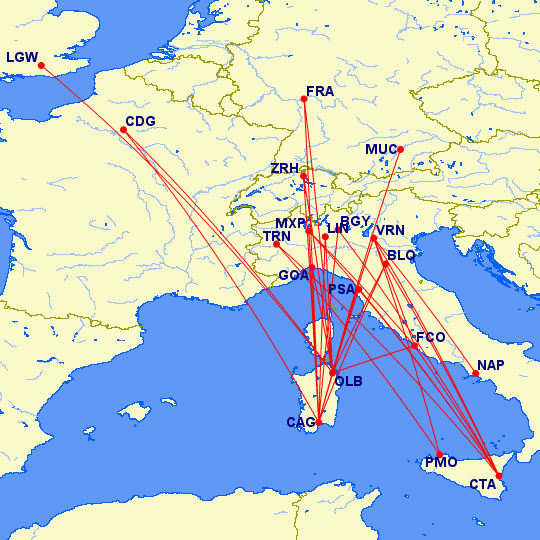 DC-9-50:  BAe-146-200: 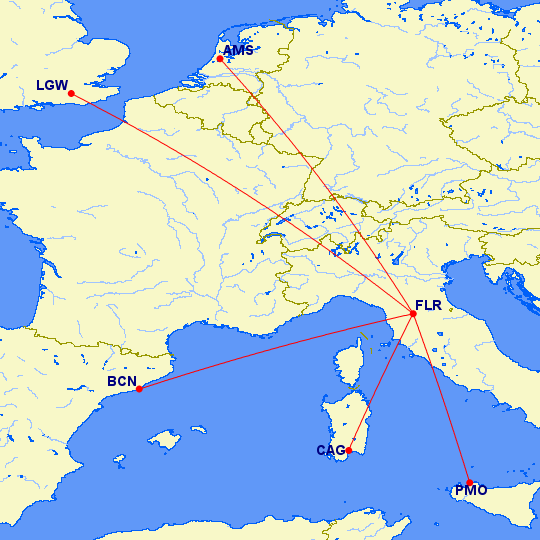 Download Meridiana 1998 v2 Flightplans Here Download Meridiana 1998 v2 Flightplans Here |
|
|
|
Post by chasensfo on Feb 22, 2023 5:51:33 GMT -5
\\Eurofly 1998 v3 (22FEB23; changed aircraft order for better AI parking, changed cruise speeds to AIG standard, fixed dead links for repaints) Eurofly (1989-2010; merged with Meridiana) IATA: GJ ICAO: EEZ CALLSIGN: E-FLY Eurofly was founded in 1989 as Alitalia's leisure charter subsidiary, based in Milan (LIN\MXP). Initially, the fleet consisted of DC-9-30s and DC-9-50s transferred over from Alitalia after being retired from the mainline fleet. MD-80s were added through the 1990s, some of which adopted the independent colors of Eurofly, as did a few DC-9-50s. Flights were primarily operated between large and medium-sized Italian and Western European cities and resort cities in Italy and the Mediterranean, while the carrier also provided general group charters between any points in Europe. Through the early to mid-1990s, Eurofly visited a large number of European cities, both large and small. But the focus had mostly shifted to just connecting points in Italy with leisure destinations by the late 1990s, and the DC-9-50s were not often seen outside of Italy unless flying to a holiday destination in Spain (especially PMI). However, there were occasional charters from Elba to nearby European cities and the DC-9s flew a daily scheduled flight between Milan's BGY airport and FCO. By 1998, only 2 DC-9-50s remained and 767-300s had started to arrive, allowing the carrier to begin long-haul charters with Toronto(YYZ) being a common destination as Alitalia had no scheduled flights there. The MD-80s were used extensively on charters to Portugal, Greece, and the Canary Islands, and also did some charters from Belgium and the Netherlands to Italian resort cities. In addition to these charters, Eurofly also used the 767s on sub-services for other carriers. One such example was an ORY-BGO-ORY flight for Corsair. Most aircraft wore the basic Alitalia livery with Eurofly titles by the late 1990s with most aircraft that wore the Eurofly house livery having left the fleet or been repainted, but there was one MD-80 in basic Alitalia colors with no titles and 1 DC-9-50 with the old Eurofly tail but an Alitalia rudder. Eurofly would grow to add more various ex-Alitalia aircraft, followed by their own A330s and other jets, with the fleet ultimately growing to over 40 aircraft. In 2010, the airline merged with Merdiana to form "Meridiana Fly". Charters flights are based on actual routes flown in the late 1990s at least once, while flight numbers, times, and days of the week served are representative. I was able to find proper flight data for the Corsair ORY-BGO service, so that charter is not representative. Michael Pearson has painted the fleet on Avsim, and I have re-done my previous repaint of the "no titles" MD-80 using his updated paints, so please re-download my no-titles version if you downloaded it prior to his new releases: FAIB 767-300 by Micheal Pearson: mpai4fs.com/2023/02/20/eurofly-767-300/AIA MD-80 fleet by Micheal Pearson: mpai4fs.com/2023/02/20/eurofly-md-80/AIA MD-80 no titles by Micheal Pearson: (modified by myself): drive.google.com/drive/folders/1rdOdq2bQMbY1j9WFqEOOSK1Q77yfOxyJ?usp=sharingAIG DC-9-50 fleet by Micheal Pearson: mpai4fs.com/2023/02/20/eurofly-dc-9-50/767-300 charters:  MD-80 charters: 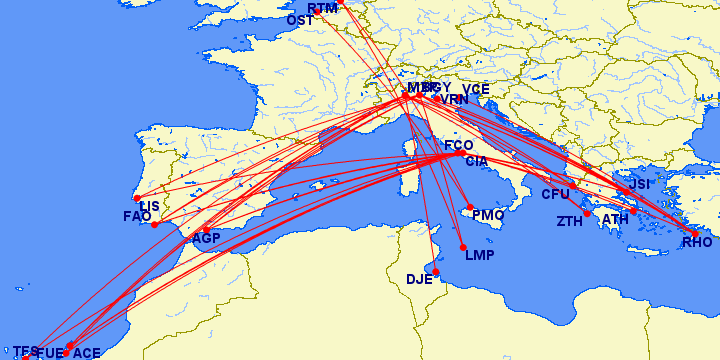 DC-9-50 scheduled flights: 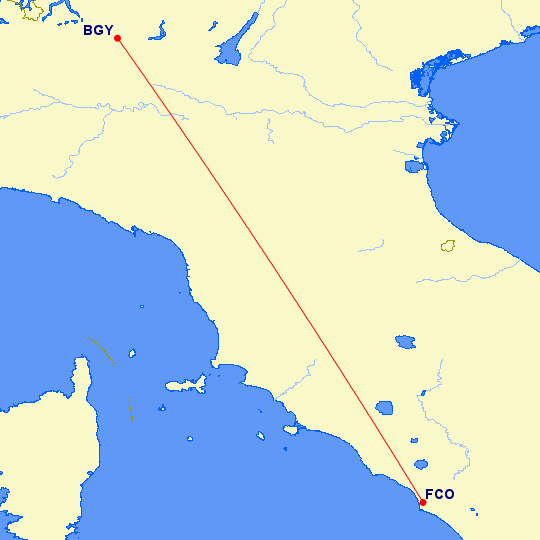 DC-9-50 charters: 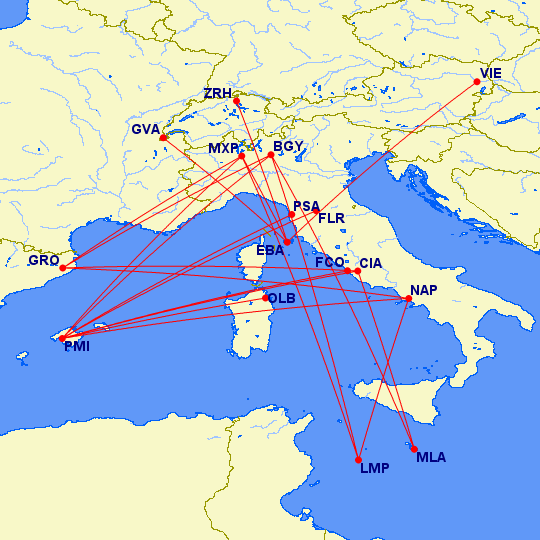 Download Eurofly 1998 version 3 Flightplans Here Download Eurofly 1998 version 3 Flightplans Here |
|
|
|
Post by chasensfo on Feb 22, 2023 6:04:12 GMT -5
\\Air Sicilia 1998 v2 (22NOV23; Added livery variations for paints by Florian van der Kleij, changed aircraft order for better AI parking, changed cruise speeds to AIG standard, added variations for repaints) Air Sicilia (1994-2002) IATA: BM ICAO: SIC CALLSIGN: AIR SICILIA Air Sicilia was a very small Italian airline, based in Palermo (PMO) on the Island of Sicily, which operated both scheduled domestic flights and international charter services. Air Sicilia was formed in 1994 with a 737-200 and an ATR-42-300, flying loose schedules between PMO and other Italian cities with regular charter flights operated in between. The aircraft wore two different liveries, the 737 with a grey belly and orange tail while the ATR was white with blue paint and a different logo. Two more ATRs were added to the fleet, neither wearing the full livery of the carrier. Both were operated in Albino liveries, with one being registered in Ireland and the other in France, the latter having logos and titles. In 1998, the 737 was mostly connecting larger cities to the Sicilian holiday destinations of PMO and LMP while the ATRs were providing connections to small islands in the region along with charter services to Spain. One of the ATRs was subleased to Air Nostrum of Spain and operated with Air Sicilia titles and logos in the late 1990s. The livery worn by the original Italian-registered ATR was adopted by most of the rest of the small fleet that was added over the years, such as a Fokker 28-1000. An MD-87 was leased from Austrian Airlines in 2001, by which time the 737-200 had been painted into a conservative euro white livery with a red tail. Air Sicilia ceased operations soon after in 2002. Charters to Spain are included for the ATR42, the routes are real but the flight numbers and times are representative. The ATRs each have a unique livery. All repaints are completed: FAIB 737-200 by myself: drive.google.com/drive/folders/1SORMFg5LWflmWfG5nmmWL_F-M_6s5kZw?usp=sharingOSP ATR 42-300 fleet by Florian van der Kleij: drive.google.com/drive/folders/1EDIlnhQGJXVE9AEJ_TX8jheyptVZG-yI737-200:  ATR-42-300:  ATR-42-300 Charters: 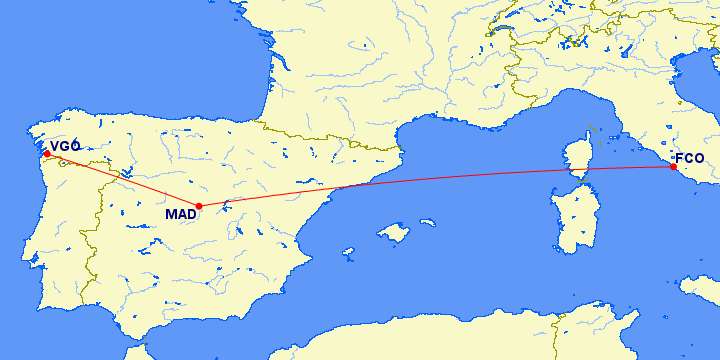 Download Air Sicilia 1998 v2 Flightplans Here Download Air Sicilia 1998 v2 Flightplans Here |
|
|
|
Post by chasensfo on Feb 23, 2023 4:48:56 GMT -5
Though I just posted an Alitalia update yesterday, I found that I somehow duplicated some MD-11s and thus ended up leaving out JNB flights and others entirely inadvertently. I also found solid information on a handful of interesting charters from the late 1990s (more than I could fit in these plans, actually), so here is a v4. Sorry to those who just downloaded these yesterday, please re-download. Eventually, when I go to add Alitalia to my website in the future, I'll type out a good history for them. But if I was too lazy to do it when I uploaded these in 2020 originally, I'm not feeling like that level of research now either LOL. \\Alitalia 1998 v3 (22FEB23; Adds many variations for new fleet repaints, corrects retired A300s being listed as A321s, cruise speeds changed to AIG standard) \\Alitalia 1998 v4 (23FEB23; Re-did MD-11 flight plans which were corrupted, added real 747 and 767 charters) Alitalia (1946-2021) IATA: AZ ICAO: AZA CALLSIGN: ALITALIA (also use "AZAX" for parking for these regional carriers) Alitalia operated by Alitalia Express (1997-2008) IATA: XM ICAO: SMX CALLSIGN: CEE-CEE EXPRESS Alitalia operated by Minerva (1997-2003) IATA: Q2 ICAO: MTC CALLSIGN: AIR MINERVA Alitalia operated by Azzurra Air (1997-2003) IATA: ZS ICAO: AZI CALLSIGN: AZZURRA AIR Founded in 1946, Alitalia was Italy's national airline, based in Rome (FCO), and was one of the longest-lasting carriers in Europe. In 1998, Alitalia was one of the world's largest airlines and had flights to 6 continents. Fleet wise, the airline was in a transitional stage retiring the aircraft of the 70s and 80s in favor of modern Airbus and Boeing jets. ATI, Alitalia's domestic and leisure subsidiary, had been closed by 1997 and the aircraft were all absorbed back into mainline Alitalia, with no aircraft remaining in the ATI livery by 1998. Airbus A321s had already arrived in decent numbers, and the very last DC-9-32s and A300B4s were retired and stored in FCO. The backbone of the fleet was now the MD-80, of which Alitalia had almost 90 examples at the time, making it one of the world's largest MD-80 operators with FCO seeing over 1,000 departures of the type per week! Long haul operations were flown by 747-200Bs, MD-11s, MD-11 Combis, and 767-300ERs. Very few domestic widebody flights existed outside of flights that were the continuation of an international route between Milan (MXP) and FCO. In addition to these aircraft, Alitalia had a vast regional network serving almost every commercial airport in Italy and reaching as far out as Portugal. Alitalia Express, which was the resurrection of Avionanova, was the largest of these carriers with a fleet of ATR-42-300s and ATR-72-212s and primarily served the hubs of LIN and FCO, but had a network stretching Italy. Several German-registered Dornier Do-328s operated by Minerva Airlines were flown extensively on domestic services, often connecting secondary cities with point-to-point flights. Avro regional jets in the form of ARJ70s and ARJ85s operated by Azzurra Air were flown domestically, across Europe, and even on holiday charters from LIN and TRN to GRO and PMI. Independently operated charter flights flown by Azzurra Air under their own branding will be in a separate package. Many regional domestic routes were operated by MD-80s on the last flight in of the night and the first flight out in the morning but were flown by turboprops the rest of the day. The rest of the operations were centered in LIN and FCO, with most longhaul flights using MXP and some secondary Italian cities have direct flights to London, Paris, Copenhagen, and other major cities in Europe. The fleet was in the middle of a livery change, with large red "TEAM" logos being added to the fleet, with some fleets like the A321 mostly wearing the decals while others like the 747 having few examples. The next few decades saw Alitalia on the brink of death several times, and many destinations like San Francisco (SFO) and Sydney (SYD) were ended in the early 2000s never to return. In 2021, Alitalia was shut down and it's assets were reorganized into ITA Airways, the new national carrier. These plans include Alitalia and all regional partners. Avianova was discontinued by late 1997 and Alitalia Express was operating the ATRs, with the Fokker 70s having been retired with the discontinuation of Avianova and sold to KLM Cityhopper. These aircraft did not get the green stripe Alitalia livery until 2002. Minerva had a mix of Alitalia livery aircraft and house livery aircraft. Azzura Air's independent flights are included separately. Most mainline aircraft had the 1998-introduced "TEAM Alitalia" decals, though most fleets had some airplanes without the stickers yet at the time. 1 MD-80 still had the former ATI hybrid livery with a gap in the cheatline where the "ATI" tiles once were. In addition, 2 747s(including the only Combi version) wore special liveries for Baci and Bulgari. 3 DC-9-30s and a large number of A300s were recently retired and sitting by the hangar in FCO. Assign these aircraft "XAZA" parking codes and "RAMP" parking types and they will sit properly stored by the hangar-like real life with my FCO ADEX release. To have the aircraft display properly, they each do 2 touch-and-goes per week late at night when you are unlikely to see them. I found good information on a few real-life charters that are included. These include a 747 flight each to Vienna (VIE) and Amsterdam (AMS) for Champions League football match charters, with VIE being visited by the Baci special livery, and 767-300ER charters from MXP to Miami (MIA) and Melbourne (MEL) via Columbo (CMB). Flight numbers and times are representative, but the times are close to real life and the charter routes are real. There was one daylight MXP-HKG MD-11 VIP flight operated related to a fashion convention in June of 1998 in addition to the daily FCO flight (which departs after midnight), but there was no slack in the MD-11 schedule for that flight. Perhaps a nice route to fly yourself, or you may manually delete an HKG-FCO-MXP return flight and create a daylight MXP non-stop charter if you wish to have a daylight AZ MD-11 departure in your virtual Kai Tak each week. A 747 charter to CNF in Brazil also didn't fit and thus was not included. The Azzura Air ARJs did not have many weekend scheduled flights as they were used for leisure charters, and these are represented as well with real routes flown in the late 1990s. The A320s did not enter the fleet until very late 1999, so I excluded them. Cargo flights are not included, though I have made separate representative plans based off 2007 MRAI plans. Though LIN was temporarily used again by Alitalia as the main airport for its Milan operations briefly in the late 1990s, this is not reflected in the schedule used for these flightplans, which use MXP as the main international hub. Repaints are completed: FAIB 747-200 fleet by Micheal Pearson: mpai4fs.com/2023/02/20/alitalia-747-200/FSPX MD-11 fleet by Micheal Pearson: mpai4fs.com/2023/02/20/alitalia-md-11/FAIB 767-300: library.avsim.net/search.php?SearchTerm=faib_767-300_aza.zip&CatID=root&Go=SearchTFS A300B4 fleet by Micheal Pearson: mpai4fs.com/2023/02/20/alitalia-a300/FAIB A321 fleet by Nils Gosselin: drive.google.com/drive/folders/1iNo1DlSL4ICGefErJQdt3tMmoc7IZsr6AIA MD-80 fleet by Michael Pearson: mpai4fs.com/2023/02/20/alitalia-md-80/AIG DC-9-30 fleet by Micheal Pearson: mpai4fs.com/2023/02/20/alitalia-dc-9-30/FMAI Avro RJ85 (BAe-146-200) by Michael Pearson: mpai4fs.com/2023/02/20/azzurra-air-avro-rj85/FMAI Avro RJ70 (BAe-146-100) by Michael Pearson: mpai4fs.com/2023/02/20/azzurra-air-avro-rj70/OSP ATR72 fleet by Florian van der Kleij: mpai4fs.com/2023/02/20/alitalia-express-atr-72-210/OSP ATR42 fleet by Florian van der Kleij: mpai4fs.com/2023/02/20/alitalia-express-atr-42-300/JBAI Do-328 fleet by Michael Pearson: mpai4fs.com/2023/02/20/minerva-airlines-dornier-328-100/1994 fleet by Eduardo Villanueva (FS9 Native; Part of Package; missing 1998-introduced "TEAM" logos): library.avsim.net/search.php?SearchTerm=alitalia_ati_avianova_summer_1994.zip&CatID=root&Go=Search (additional update: library.avsim.net/search.php?SearchTerm=alitalia_ati_avianova_summer_1994_update.zip&CatID=root&Go=Search)747-200B\M: 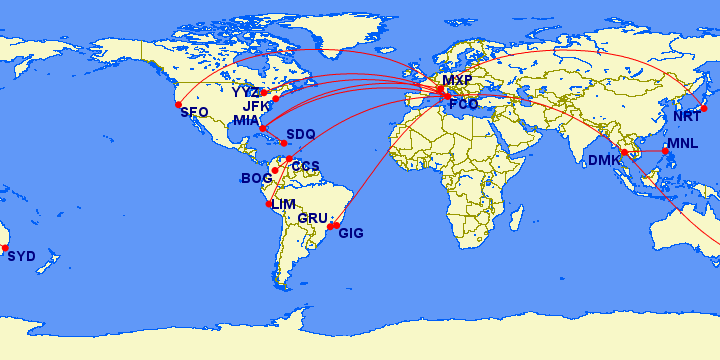 747-200B\M charter flights: 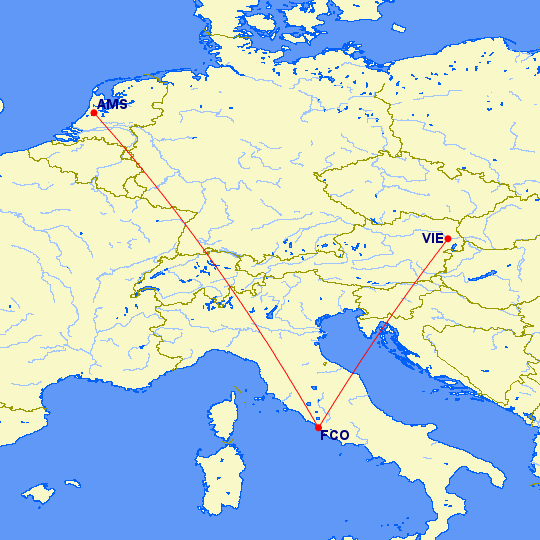 MD-11:  MD-11 Combi:  767-300ER:  767-300ER charter flights:  A321: 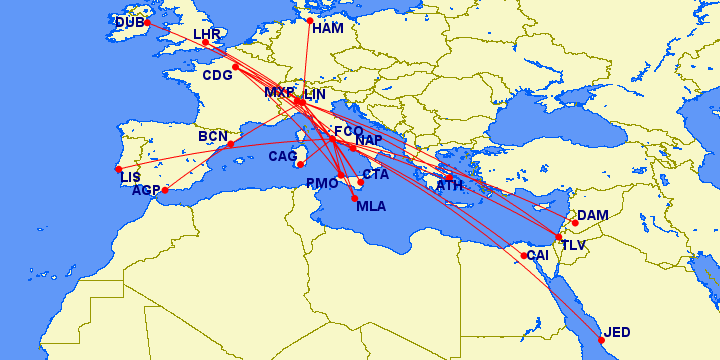 MD-80:  RJ70\RJ85 operated by Azzurra Air: 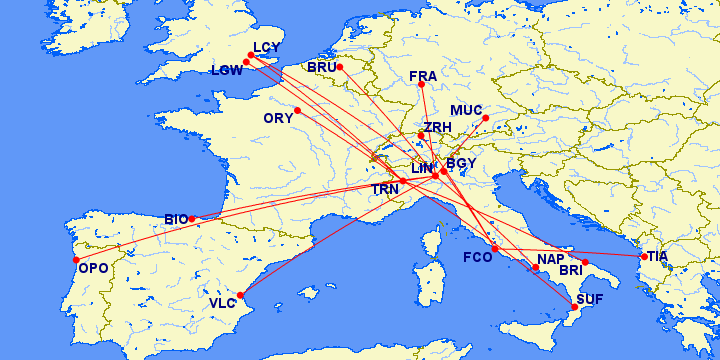 RJ70\RJ85 operated by Azzurra Air charter flights: 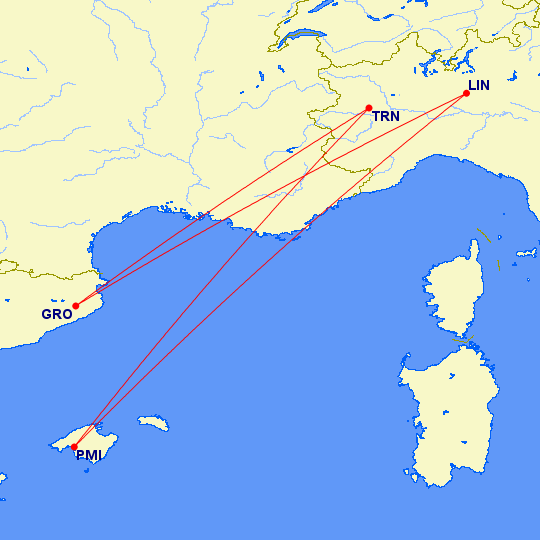 ATR-72-212 operated by Alitalia Express:  ATR-42-300 operated by Alitalia Express: 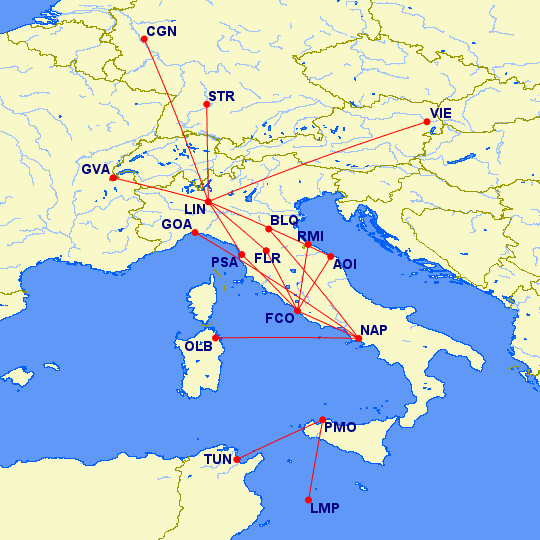 Do-328 operated by Minerva:  Download Alitalia 1998 v4 Flightplans Here Download Alitalia 1998 v4 Flightplans Here |
|





















































































